Channeling
May 23 - June 29, 2024
Chelsea Culprit, Madge Gill, & Jennie Jieun Lee
-
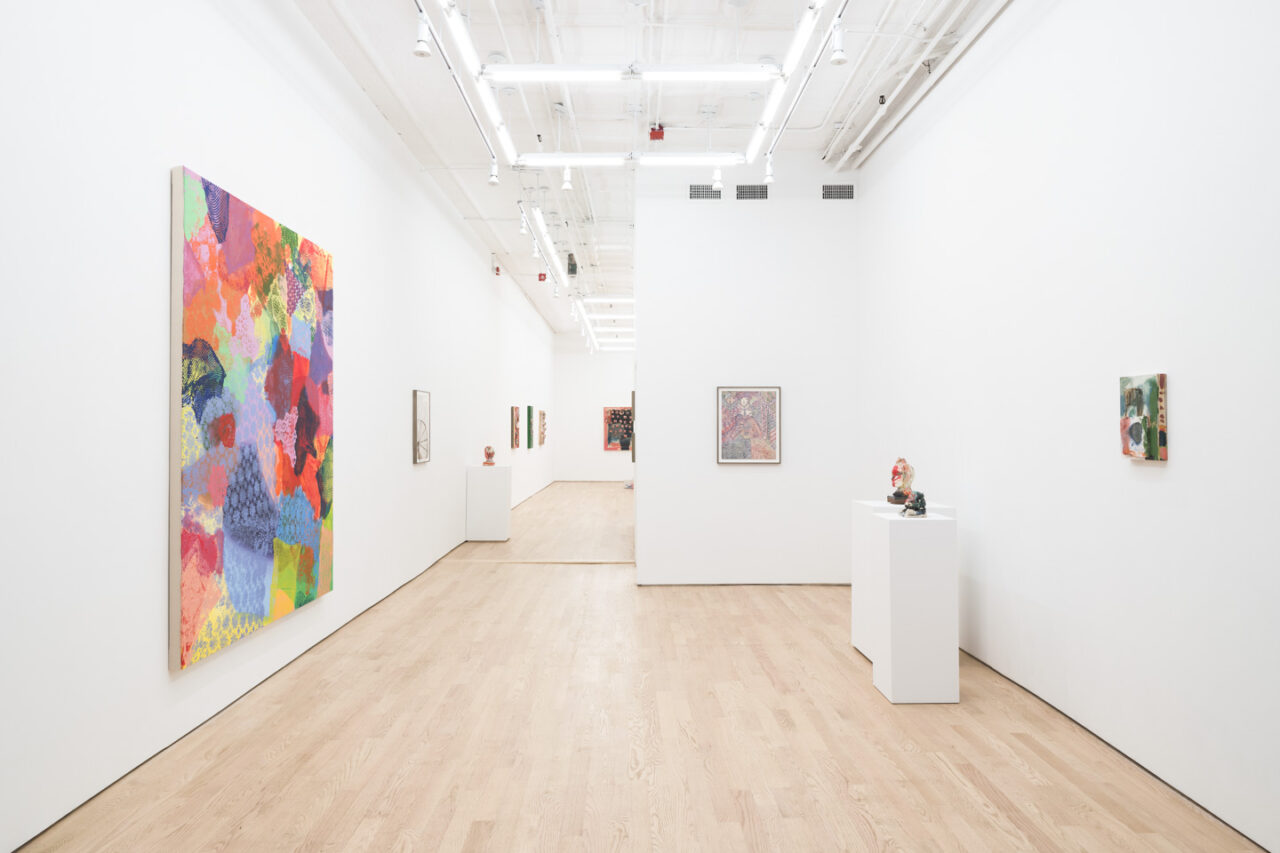
Installation view, Channeling, 2024
-
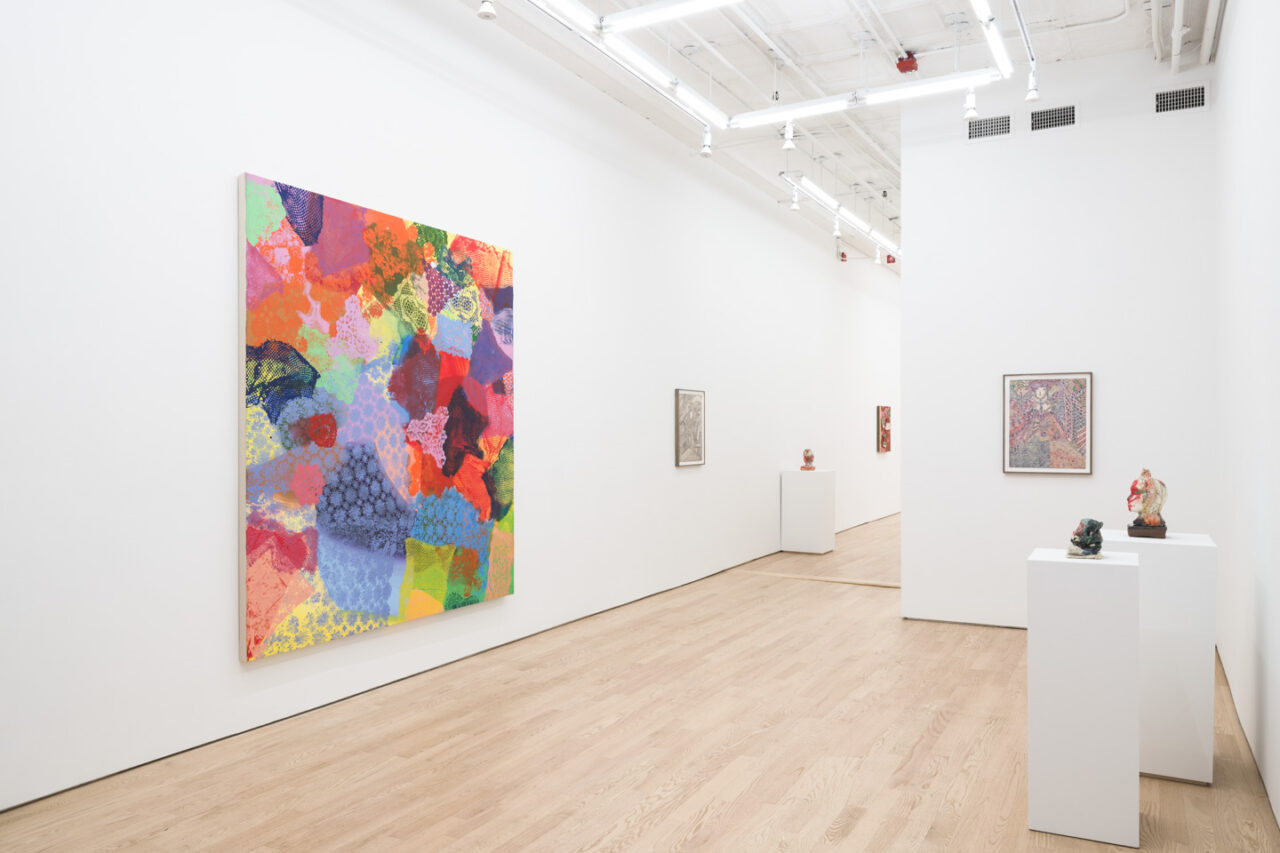
Installation view, Channeling, 2024
-
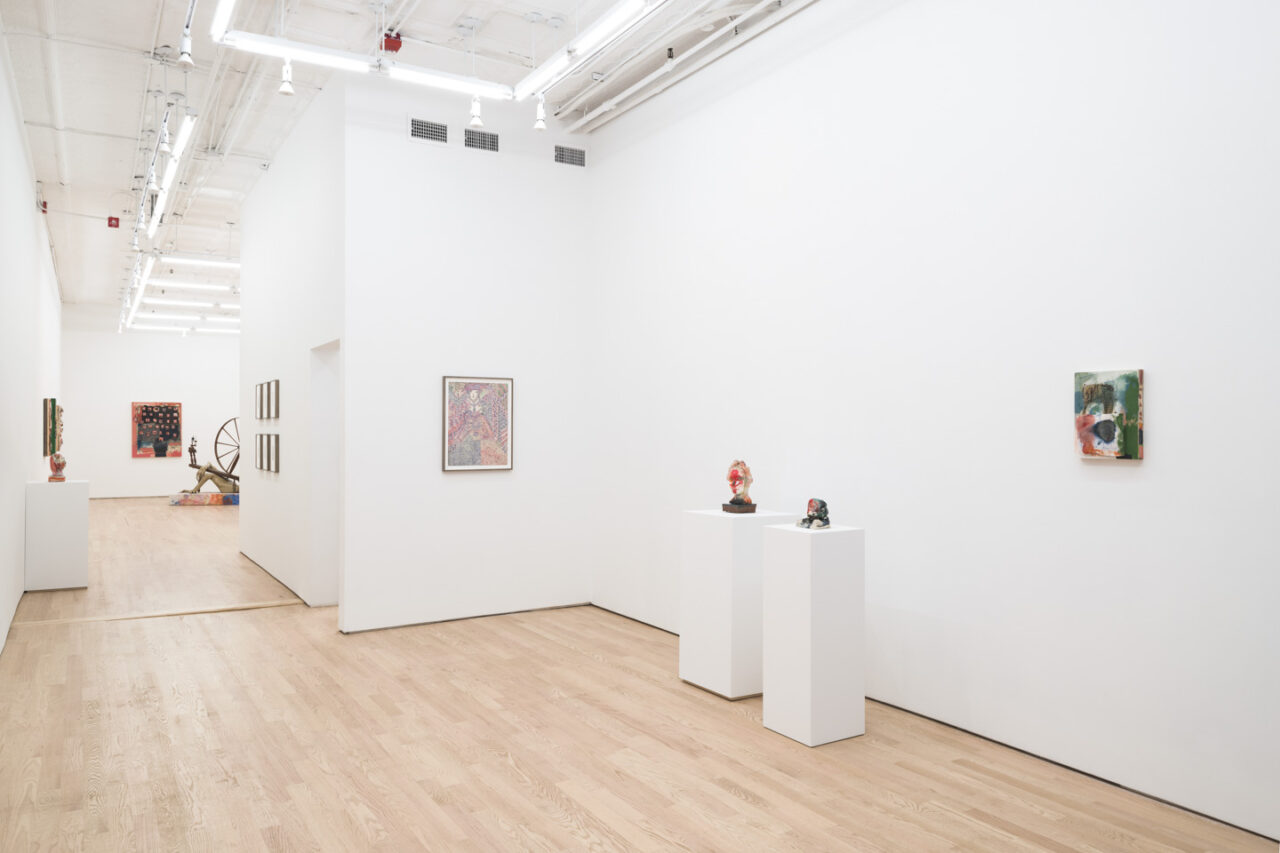
Installation view, Channeling, 2024
-
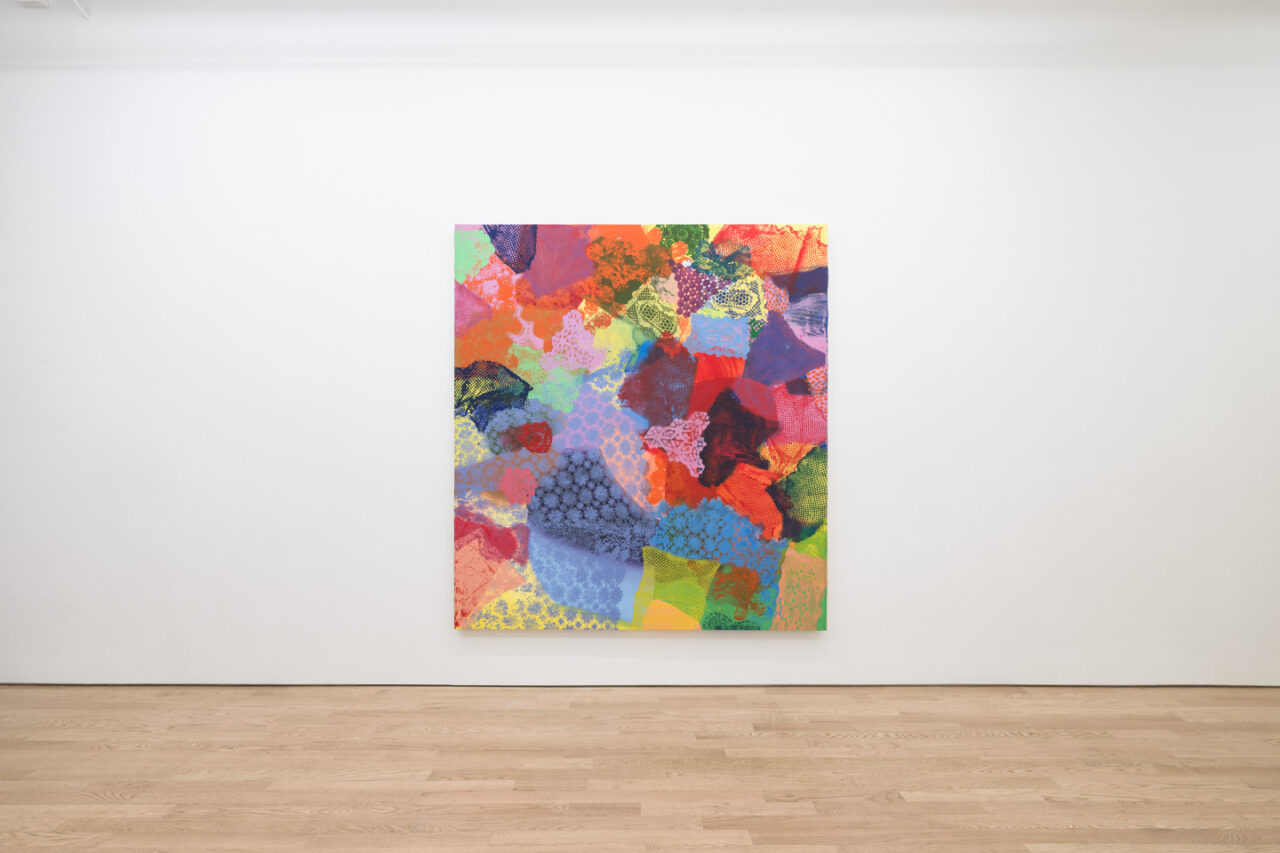
Installation view, Channeling, 2024
-
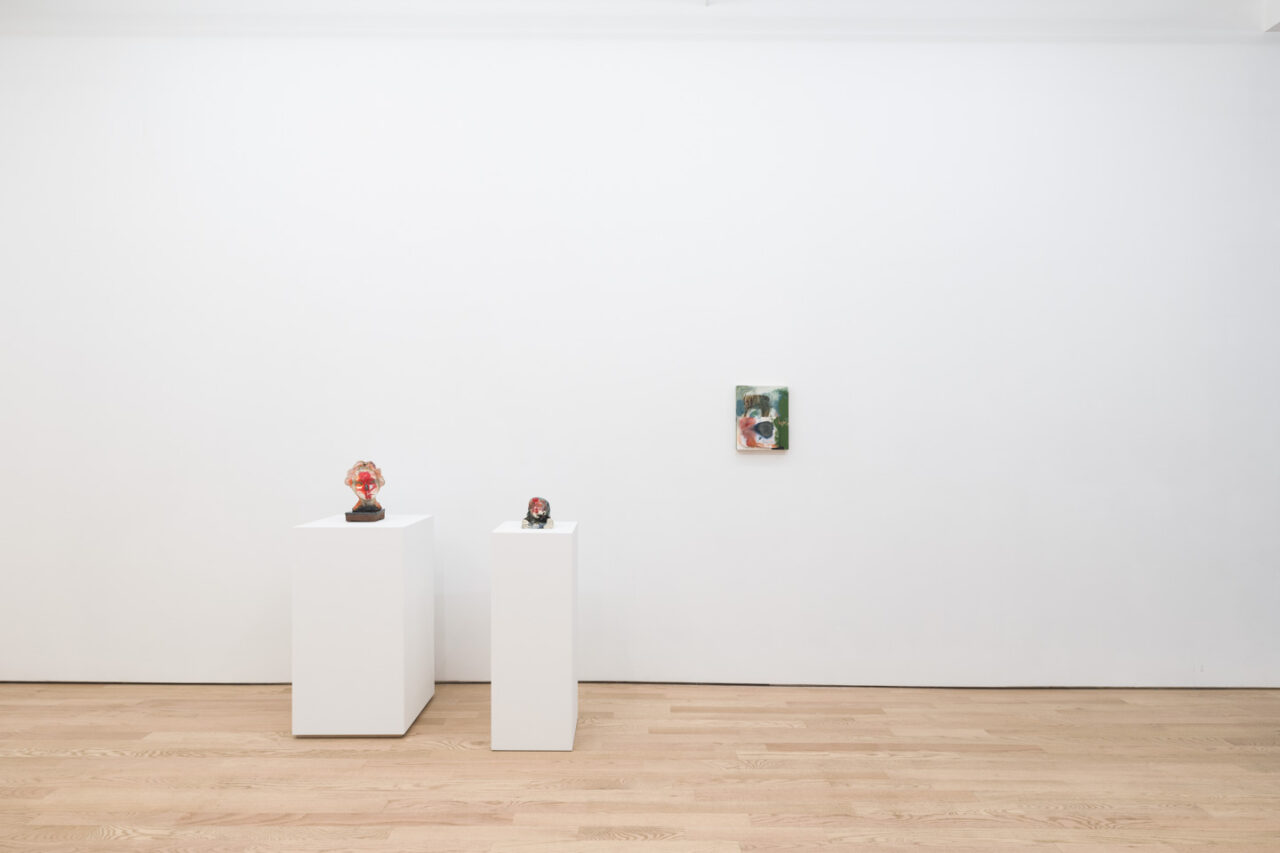
Installation view, Channeling, 2024
-
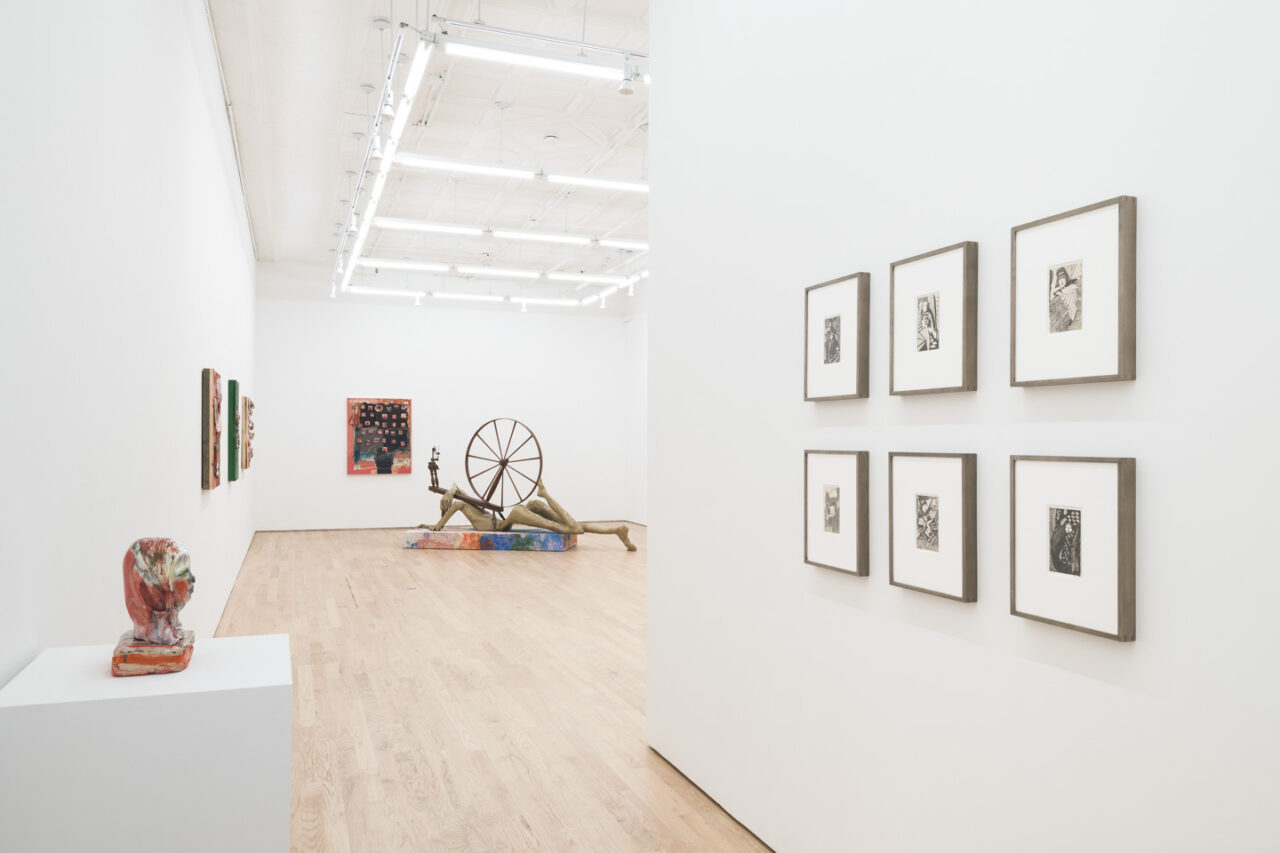
Installation view, Channeling, 2024
-
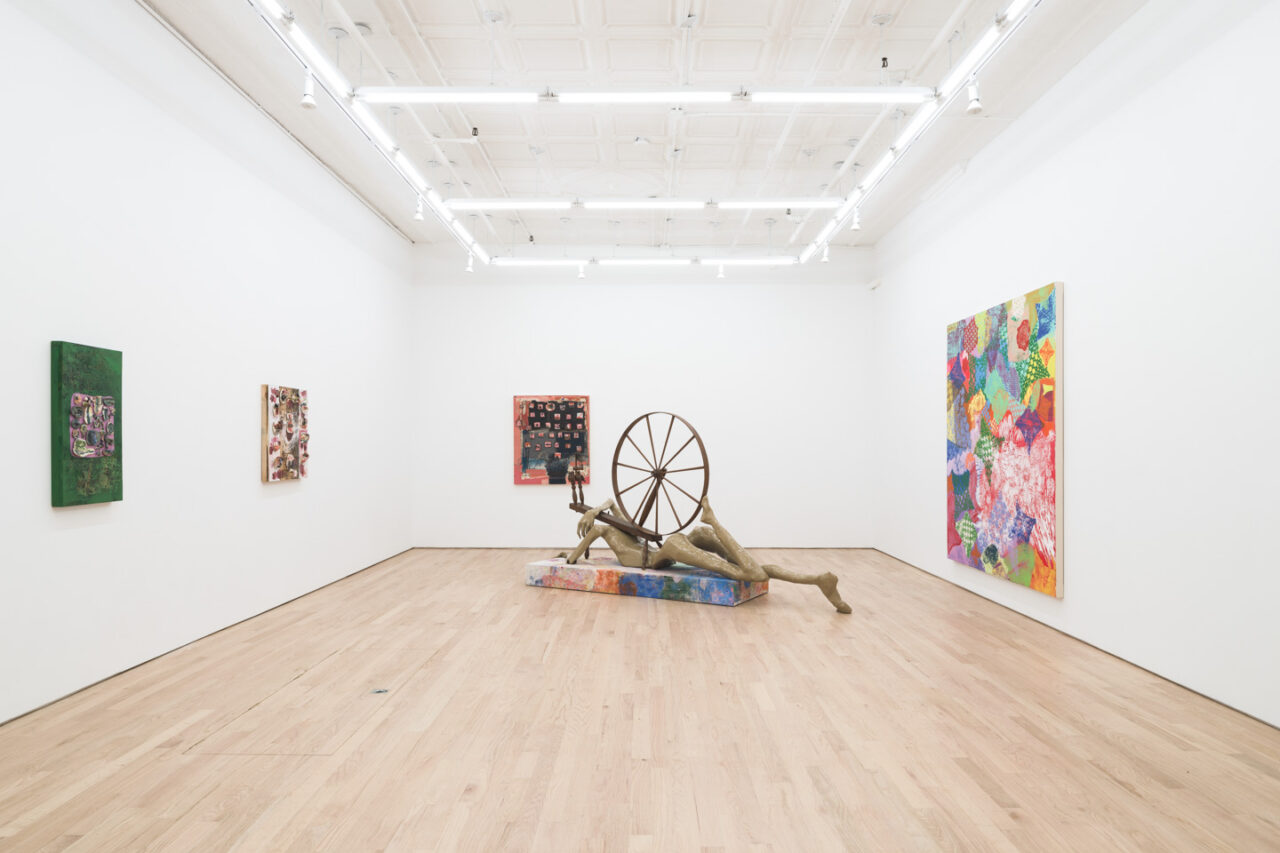
Installation view, Channeling, 2024
-
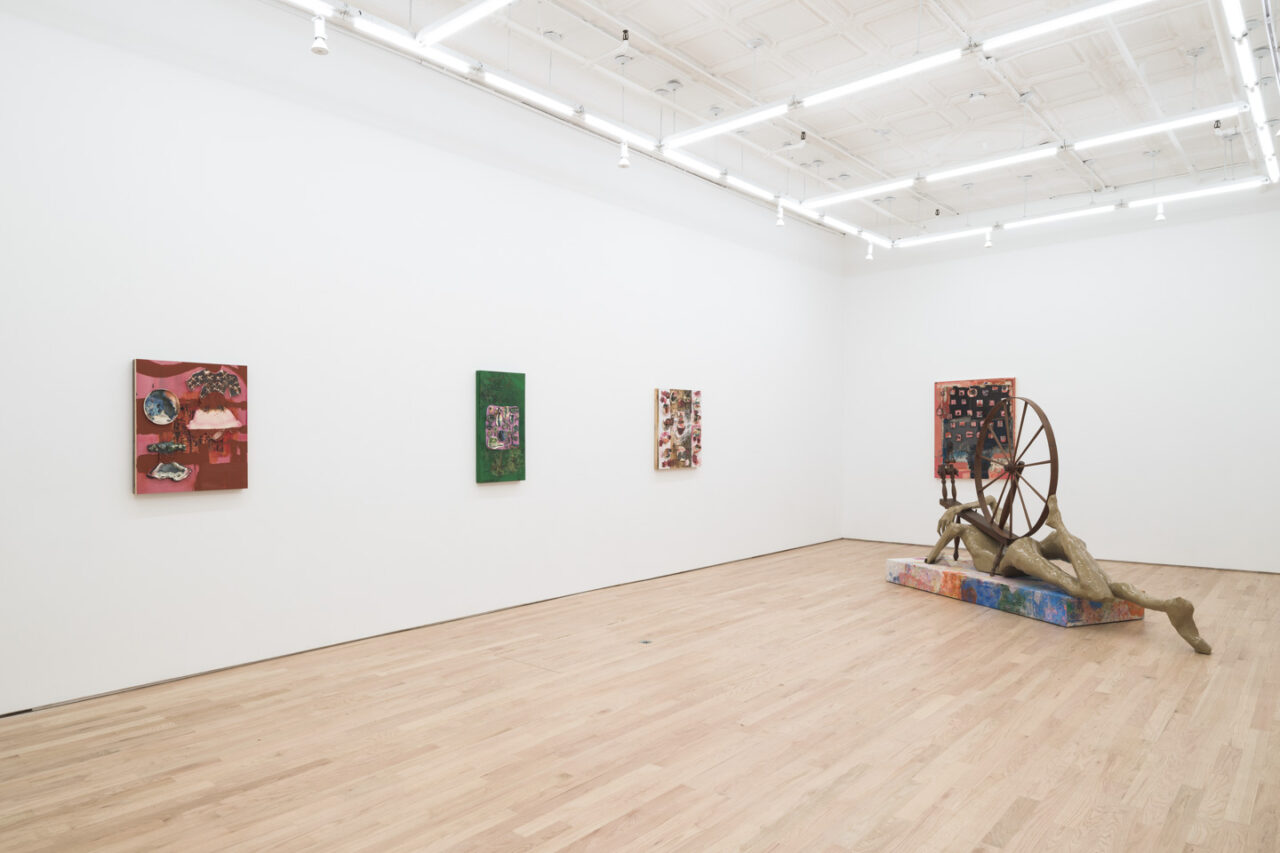
Installation view, Channeling, 2024
-
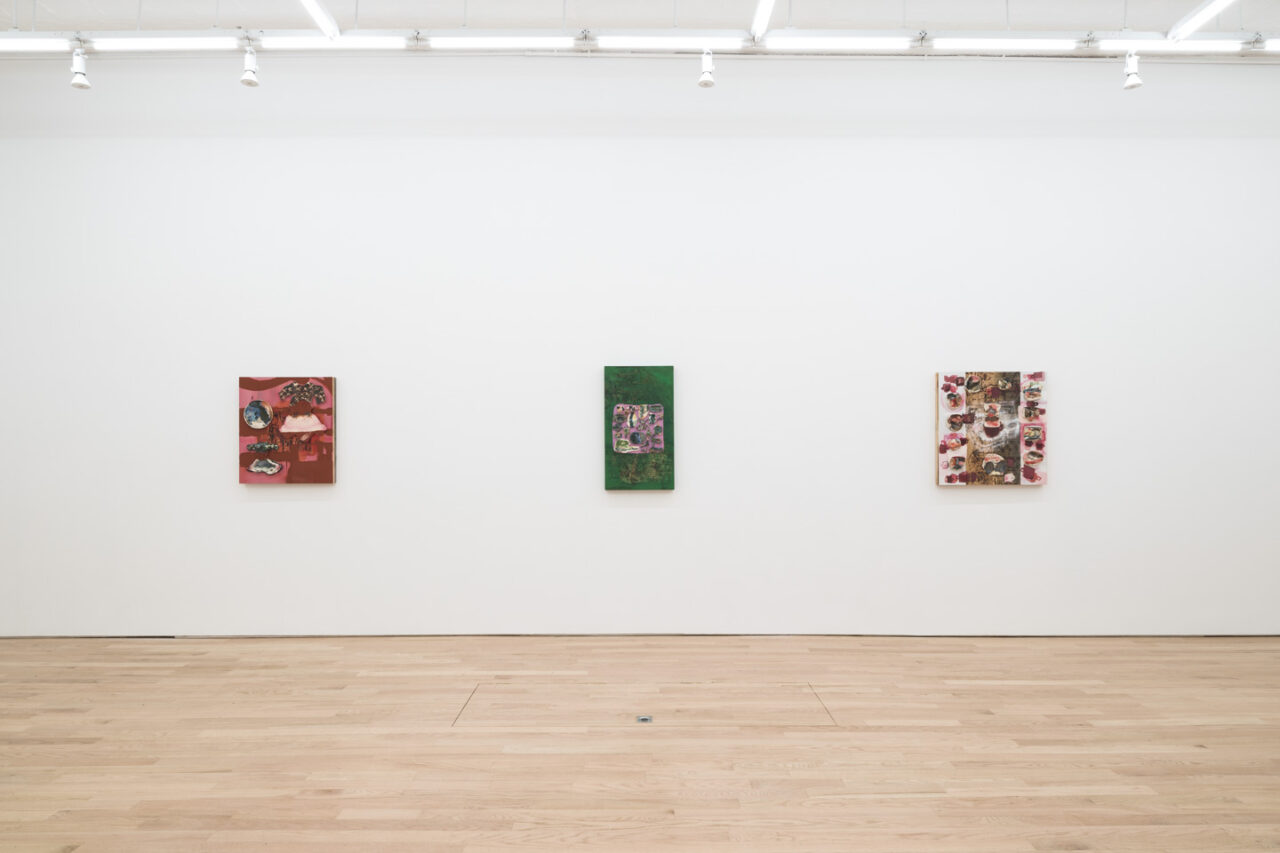
Installation view, Channeling, 2024
-
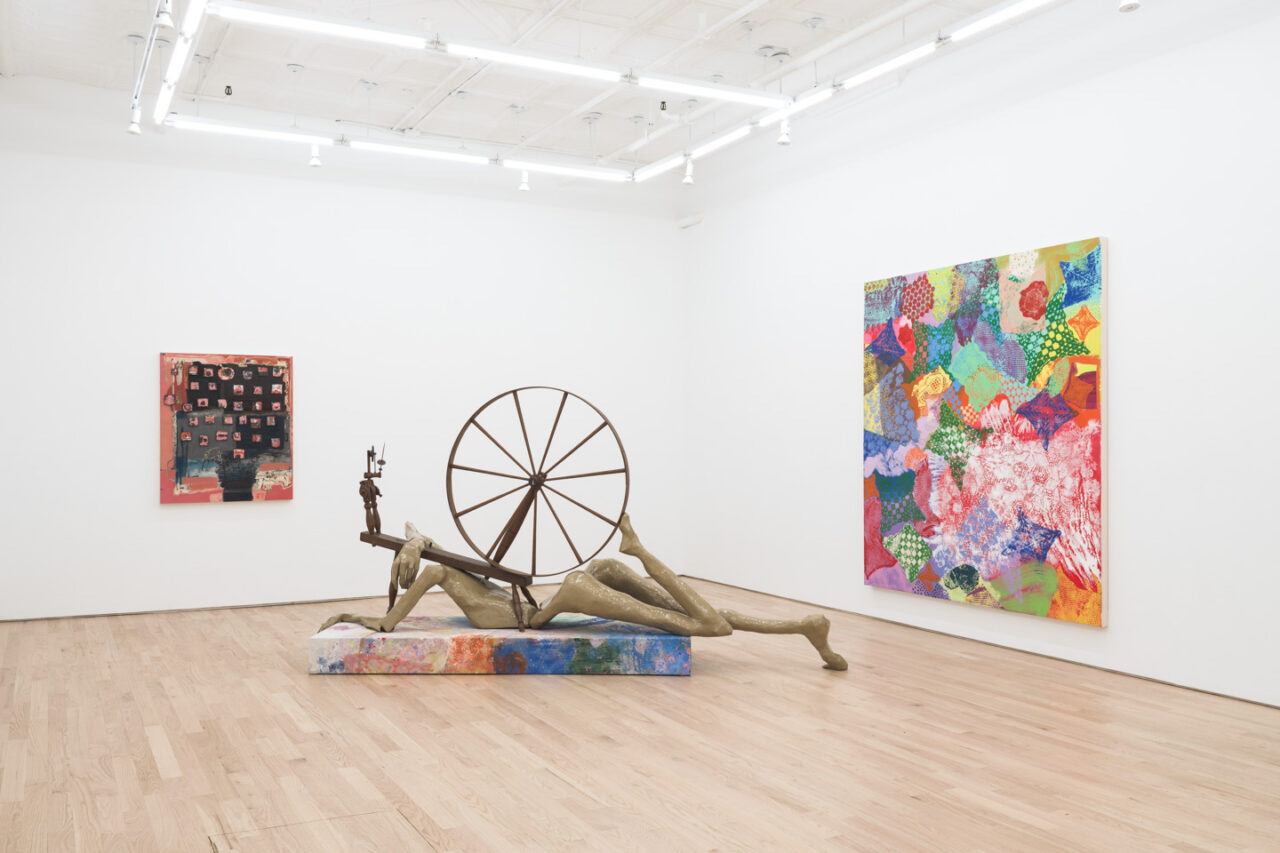
Installation view, Channeling, 2024
-
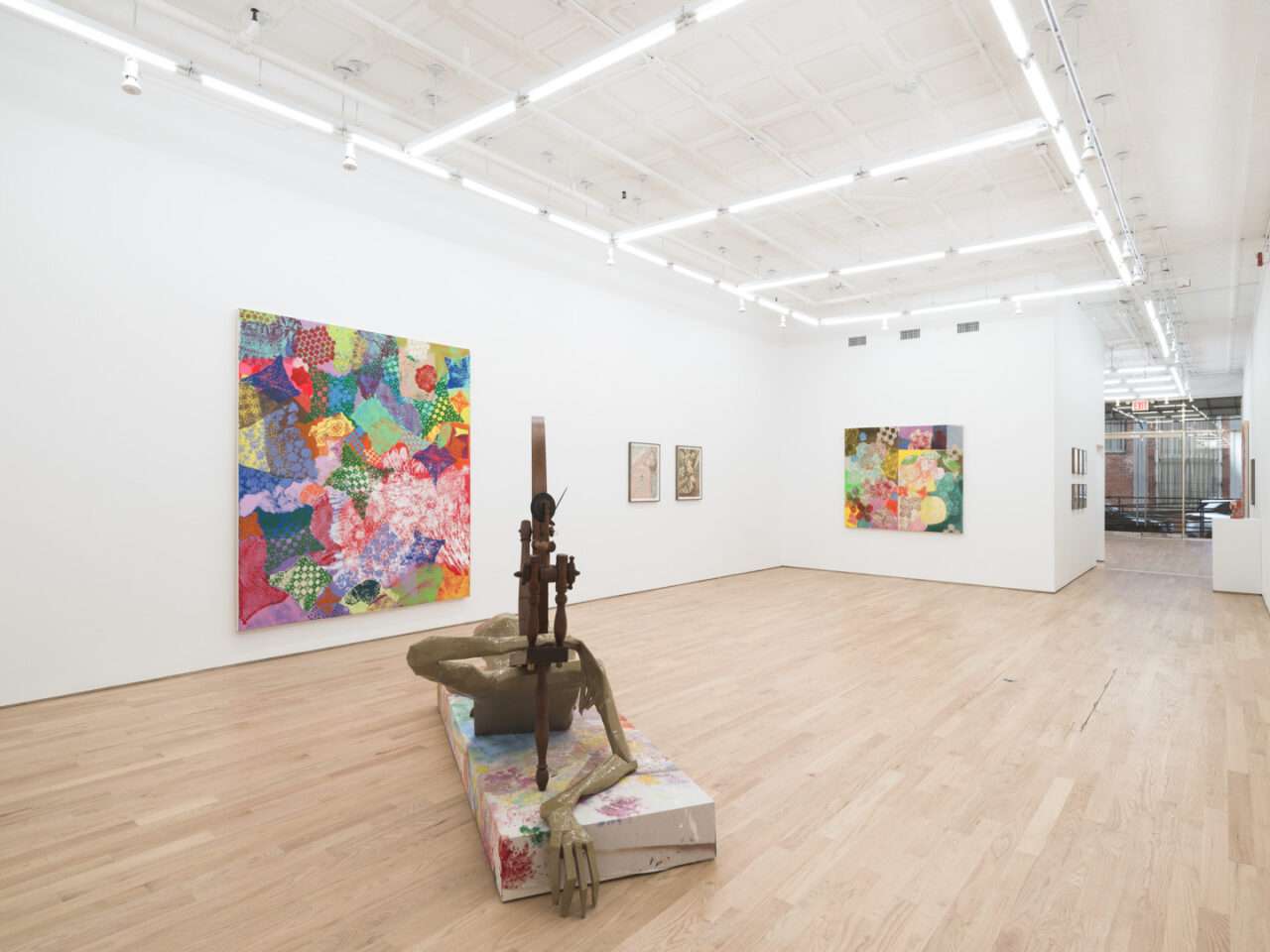
Installation view, Channeling, 2024
-
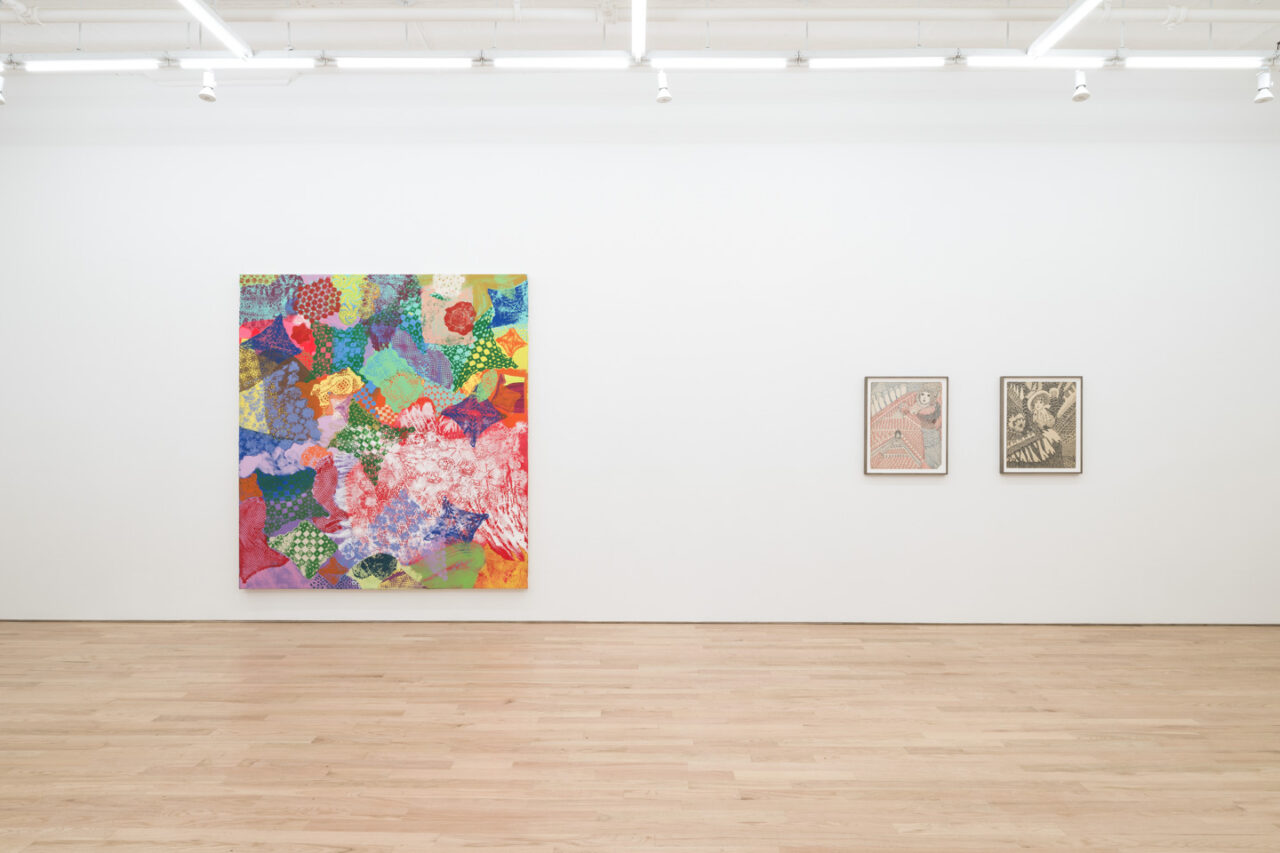
Installation view, Channeling, 2024
-
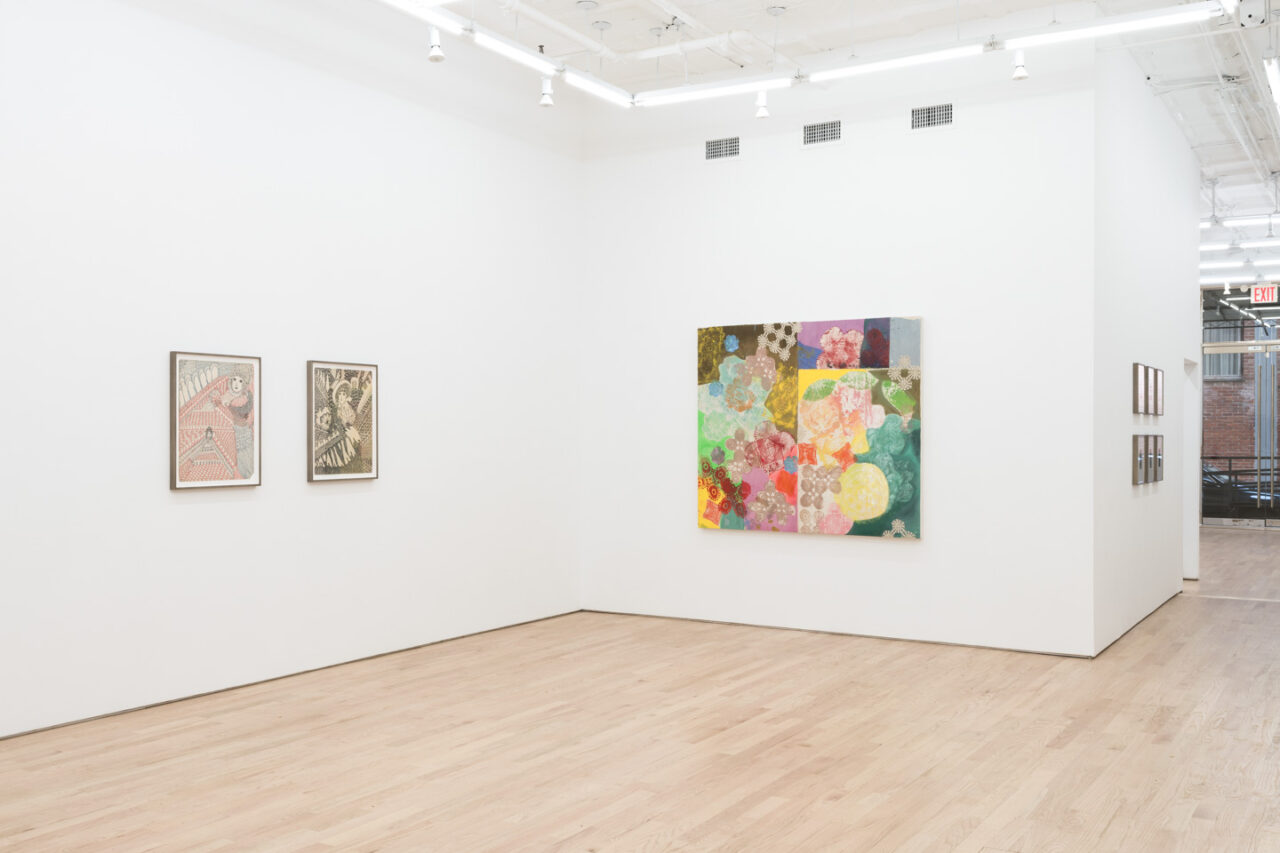
Installation view, Channeling, 2024
-
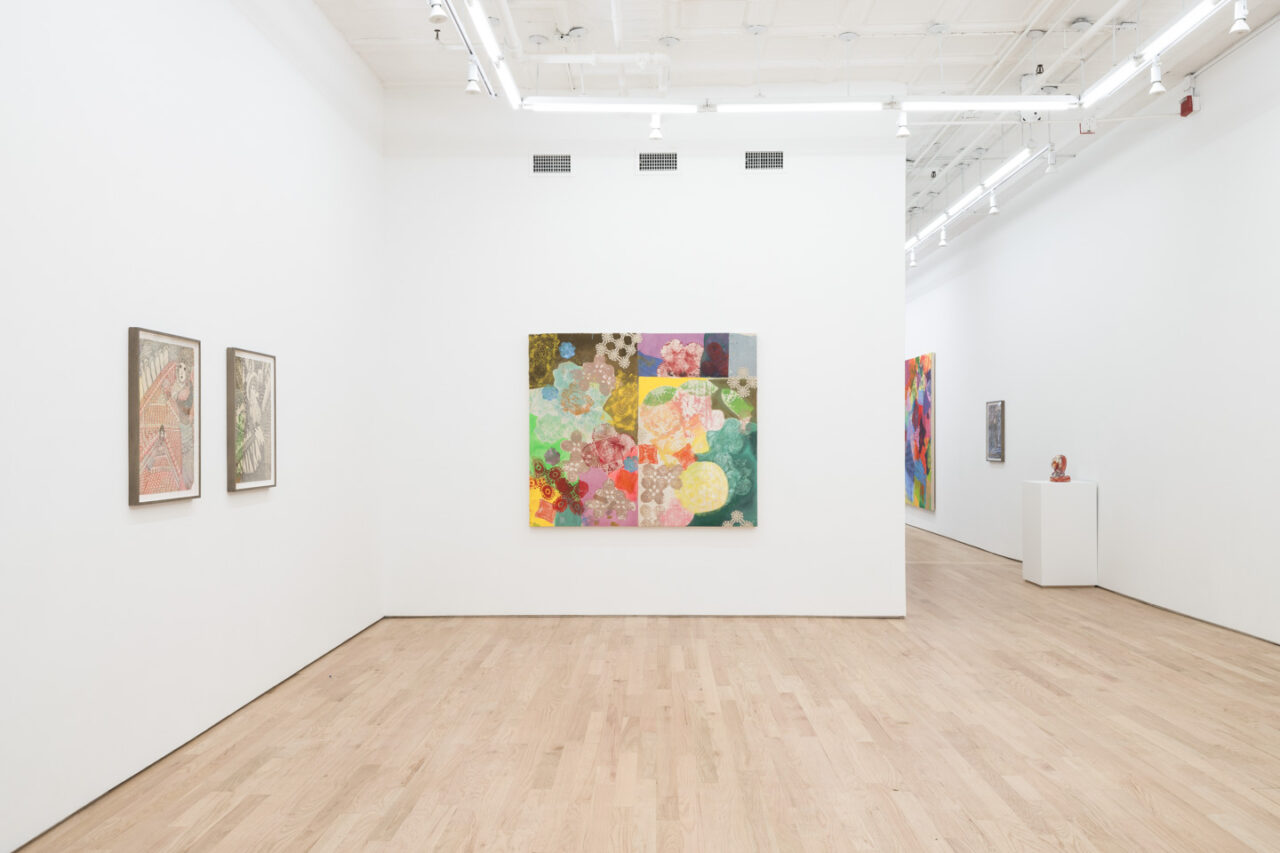
Installation view, Channeling, 2024
-
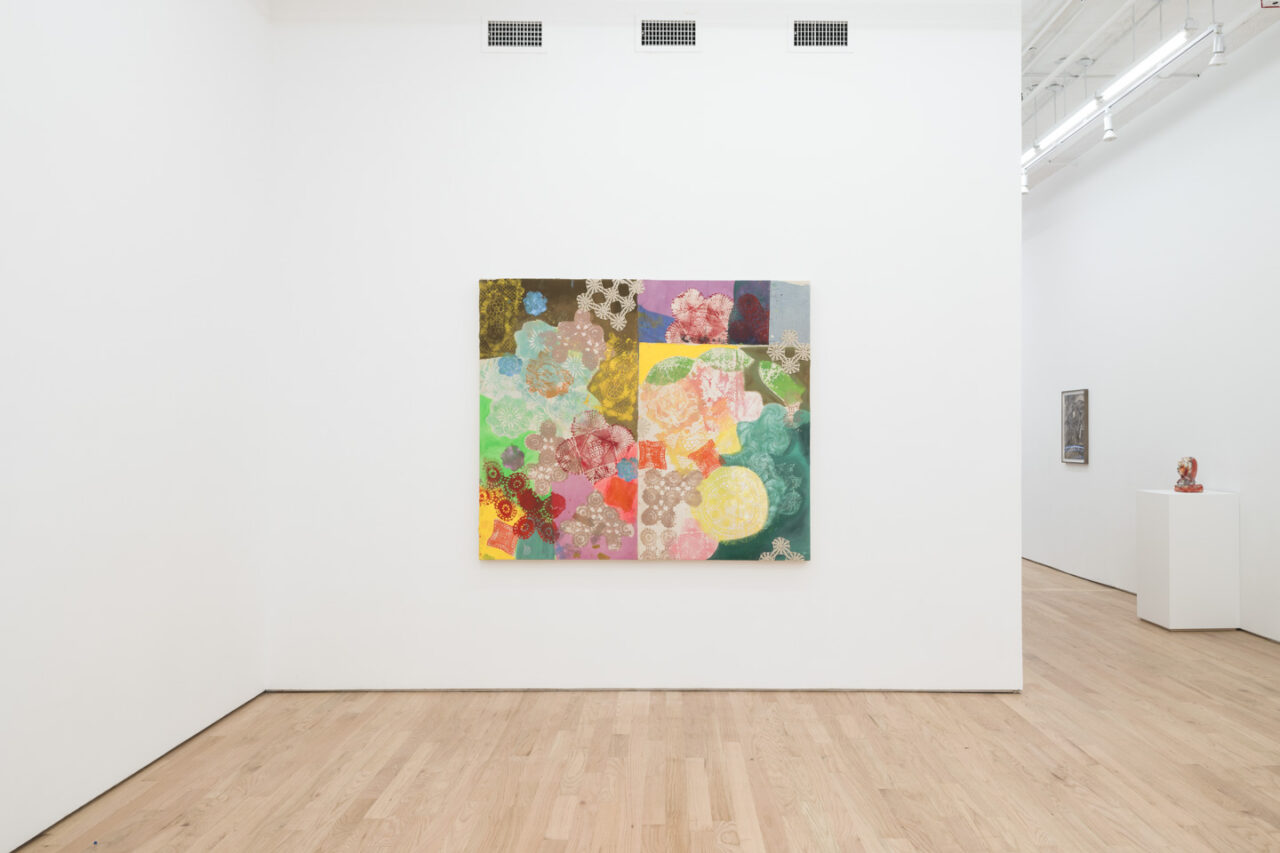
Installation view, Channeling, 2024
-

Chelsea Culprit
Scrim 5; white and red tablecloth, green stars, 2024
Latex paint on canvas
91 x 84 inches -

Chelsea Culprit
Yellow Triangle, Green Amoeba, Brown Ground, Denim Double, 2024
Latex, acrylic, and lace on canvas
58 1/2 x 69 inches -
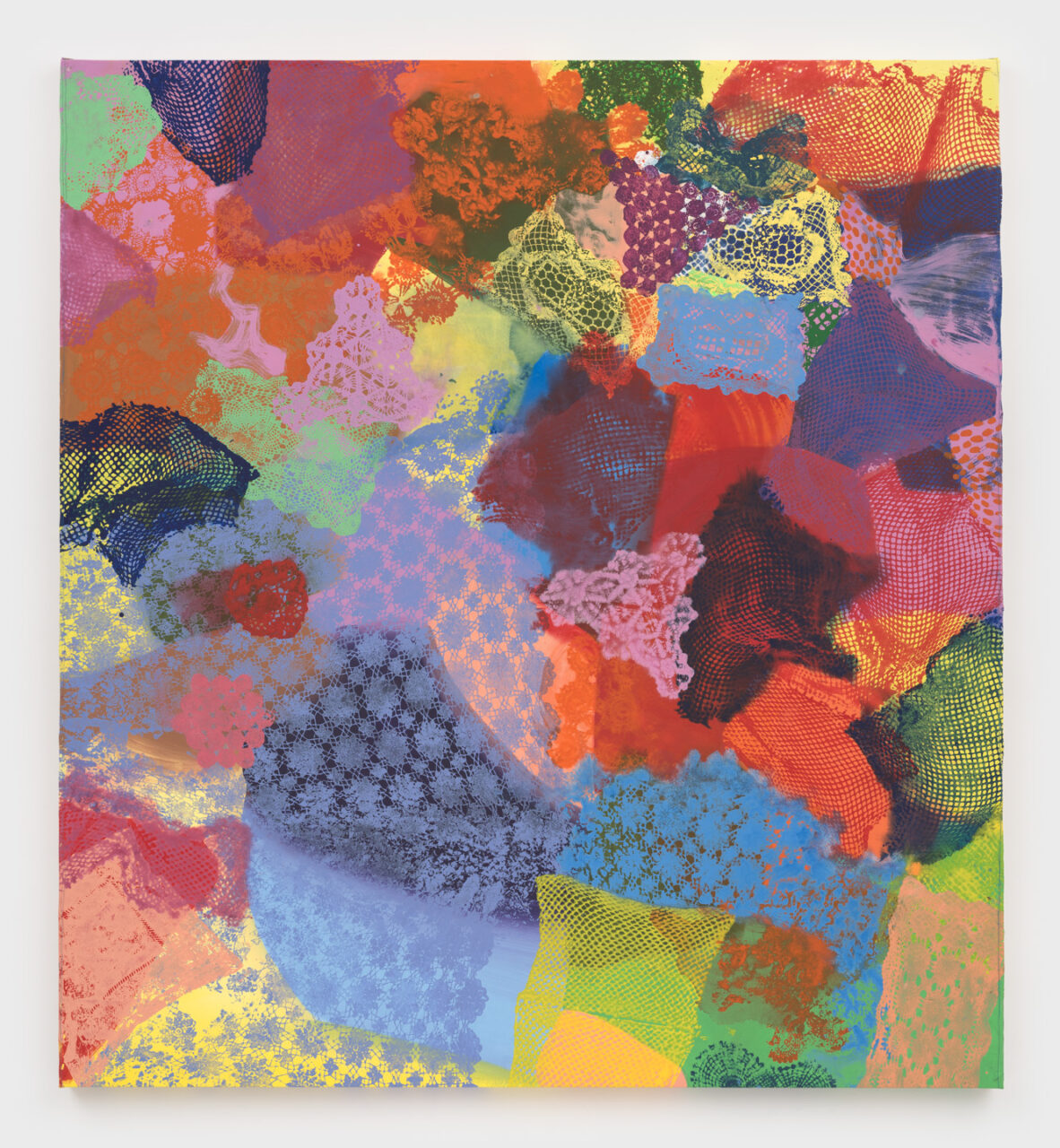
Chelsea Culprit
Scrim 6; Periwinkle wave, liquid net, molten flag, 2024
Latex paint on canvas
91 x 84 inches -

Jennie Jieun Lee
Dress Migration, 2024
Glazed stoneware, oil, graphite on wood burned panel
29 x 25 1/2 x 2 1/2 inches -
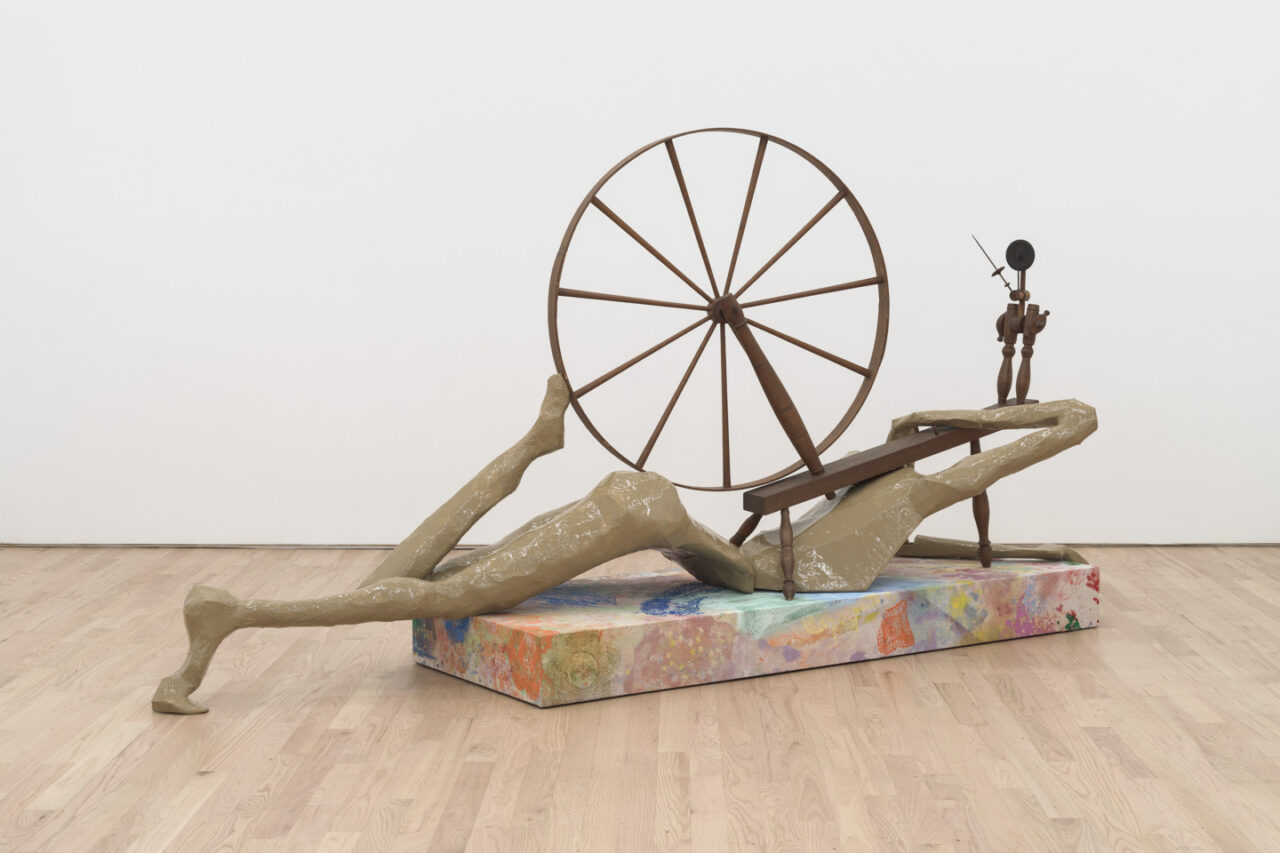
Chelsea Culprit
Wheel Turning at Worlds End, 2024
Spinning wheel, drop cloth, acrylic and enamel paint, cardboard, packaging tape
68 x 131 x 42 1/2 inches -
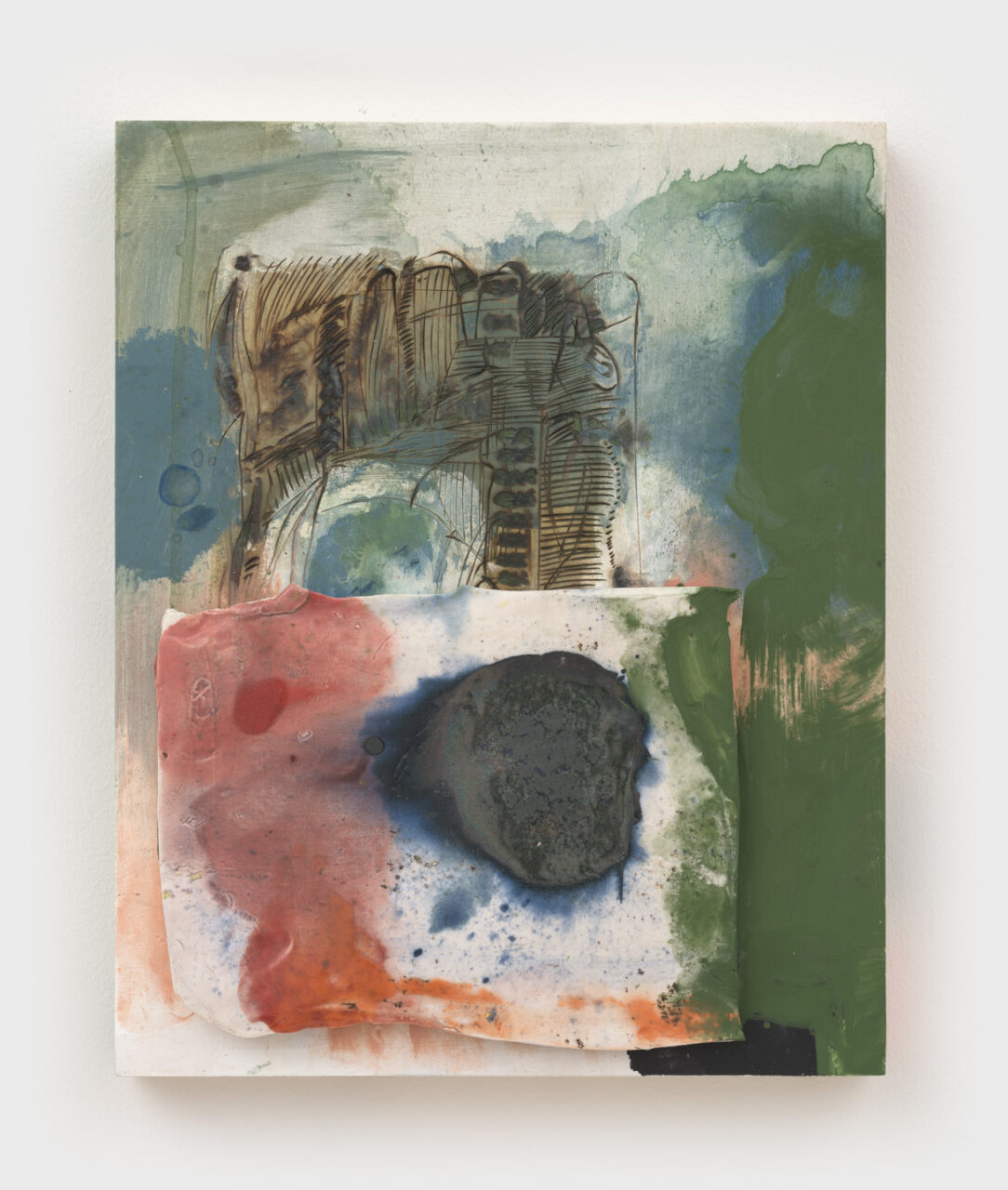
Jennie Jieun Lee
Eclipse, 2024
Glazed porcelain, oil, wood burned panel
14 x 11 1/4 x 3 inches -
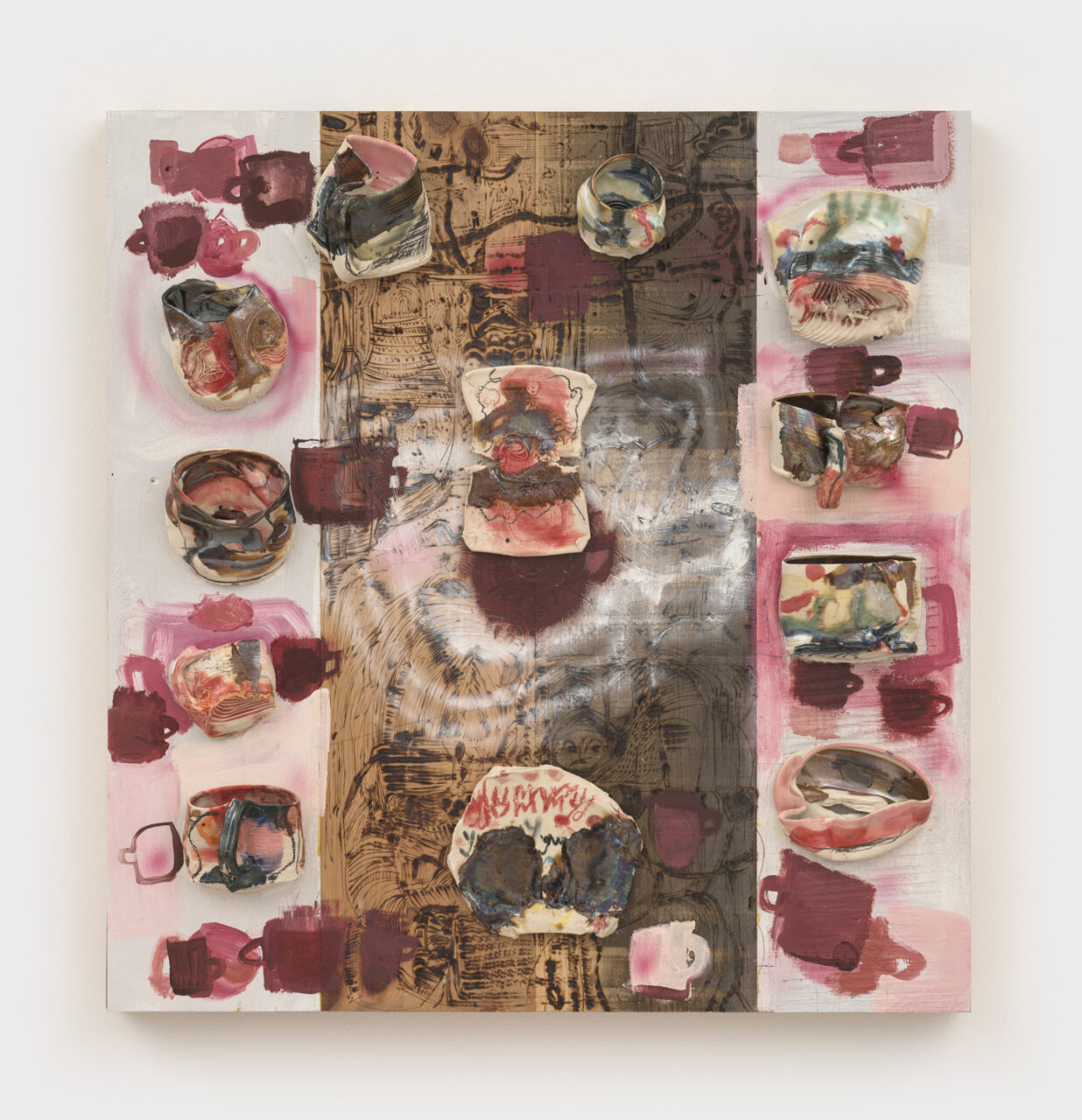
Jennie Jieun Lee
Thrown cups, 2024
Glazed porcelain, oil and airbrush on wood burned panel
31 x 30 x 4 inches -
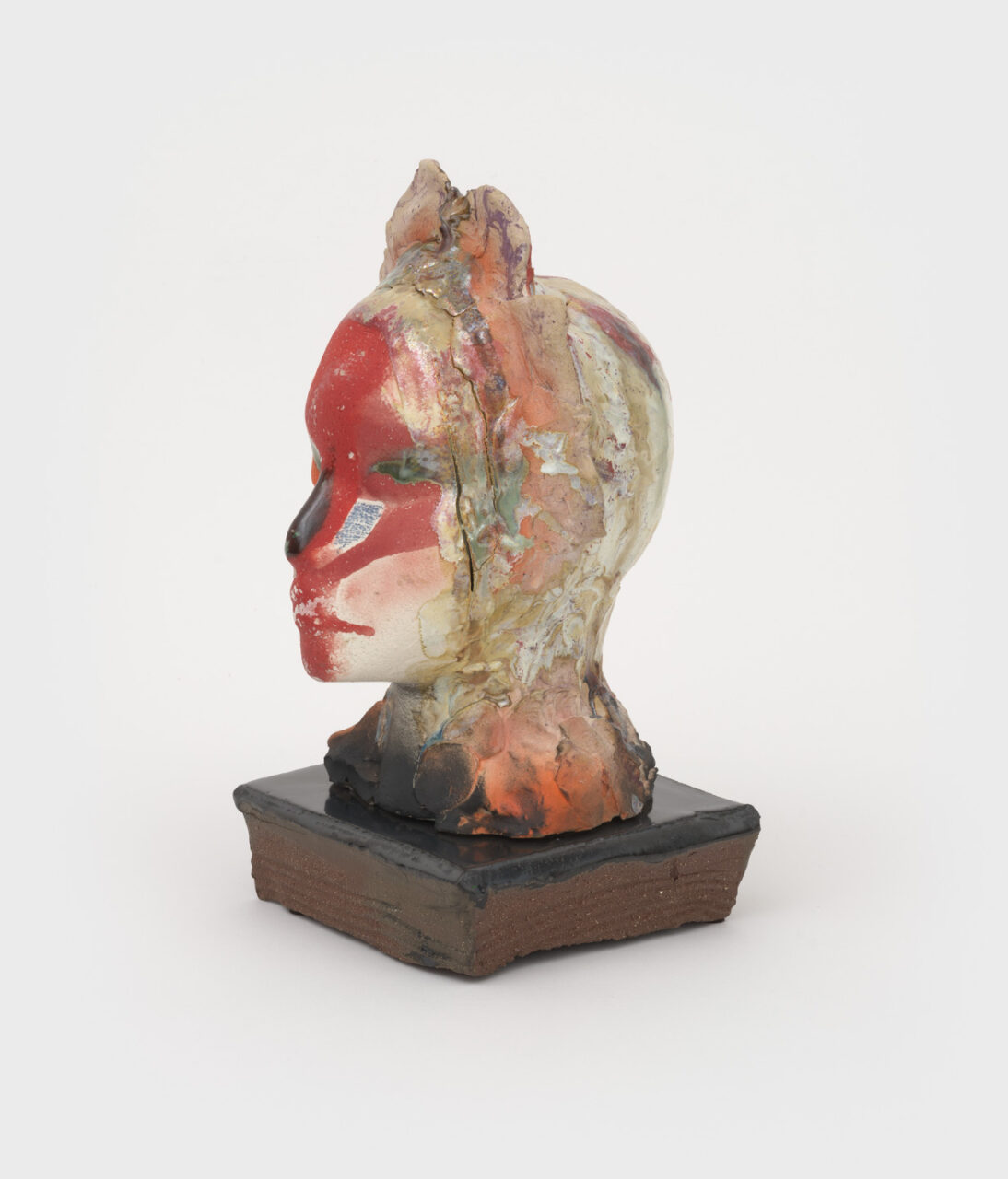
Jennie Jieun Lee
Red face, 2024
Slipcast porcelain, glaze, stoneware stand
10 x 8 x 8 inches; stoneware stand: 2 x 6 x 6 inches -

Jennie Jieun Lee
Alfred Jensen poster, Louisiana Museum, 1973, 2024
Glazed stoneware, oil, graphite, color pencil on wood burned panel
47 x 40 x 4 inches -
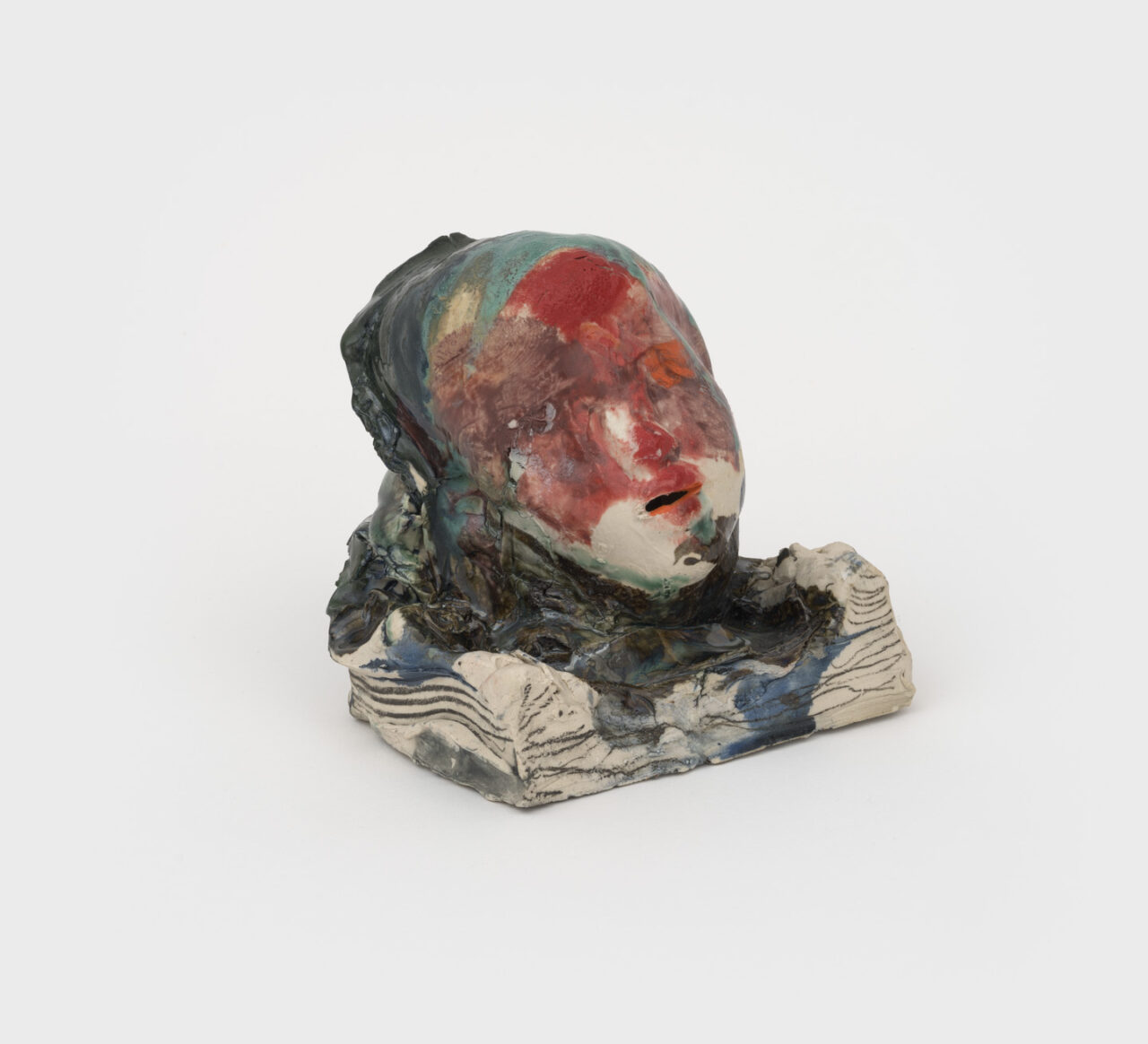
Jennie Jieun Lee
Asleep, 2024
Slipcast porcelain, glaze
5 1/2 x 5 1/2 x 4 inches -
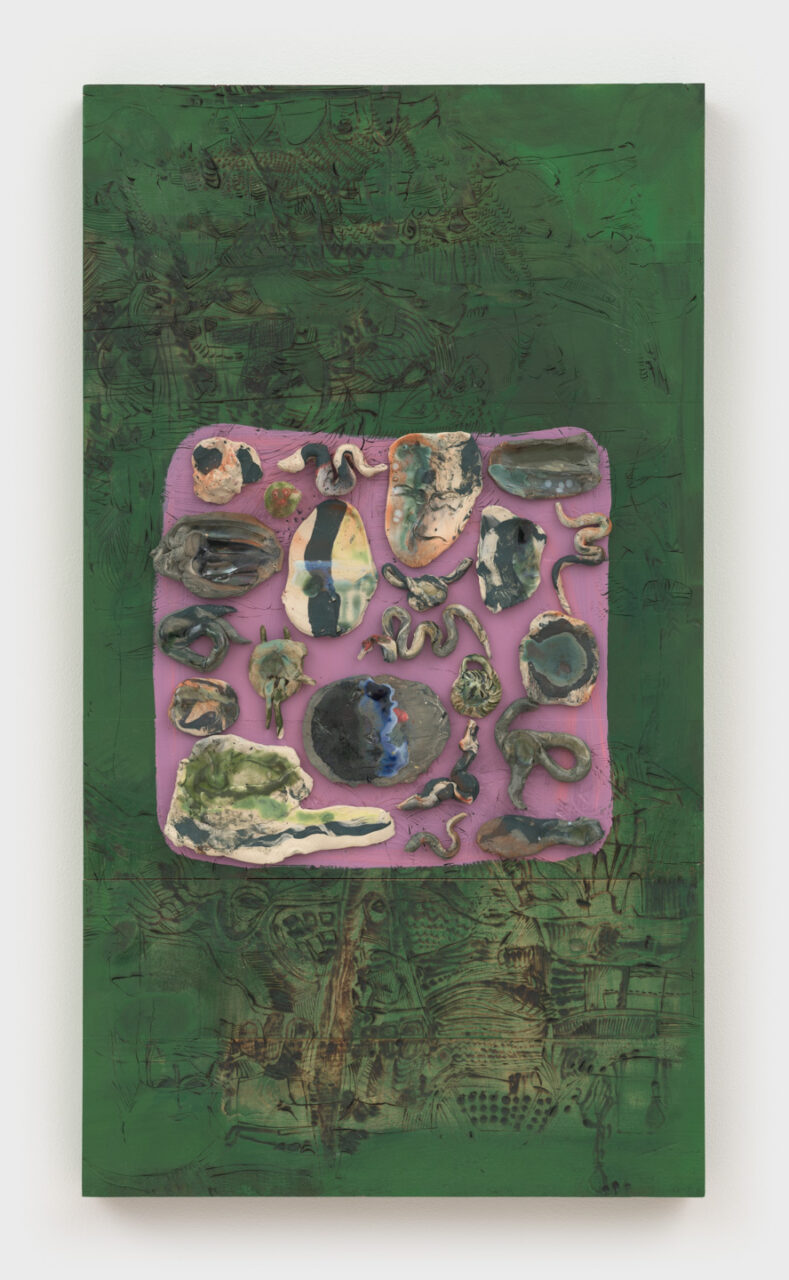
Jennie Jieun Lee
Green Screen, 2024
Glazed porcelain, oil, acrylic on wood burned panel
34 x 19 x 4 inches -
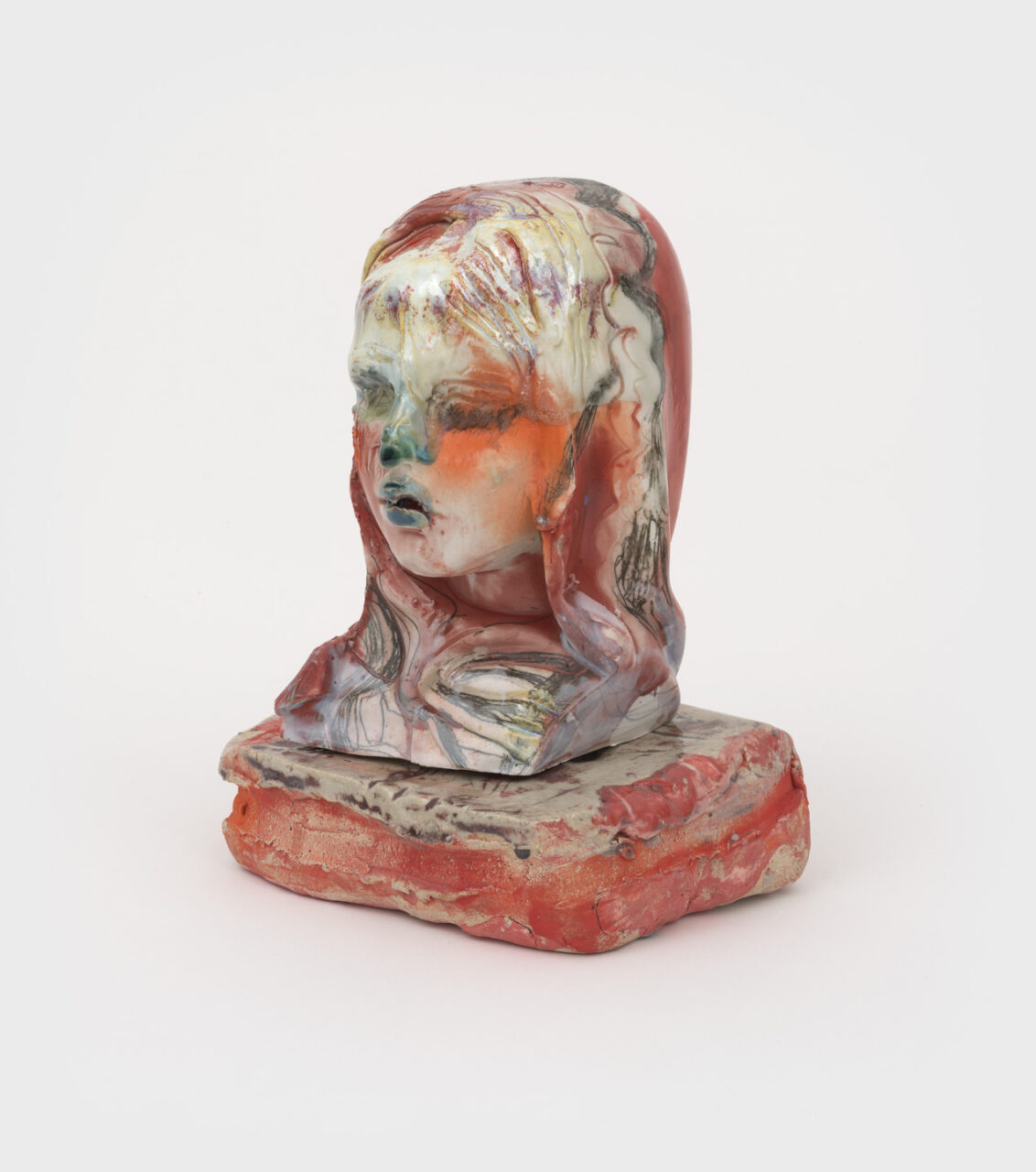
Jennie Jieun Lee
Cold, 2024
Slipcast porcelain, glaze, stoneware
8 x 6 x 6 inches -
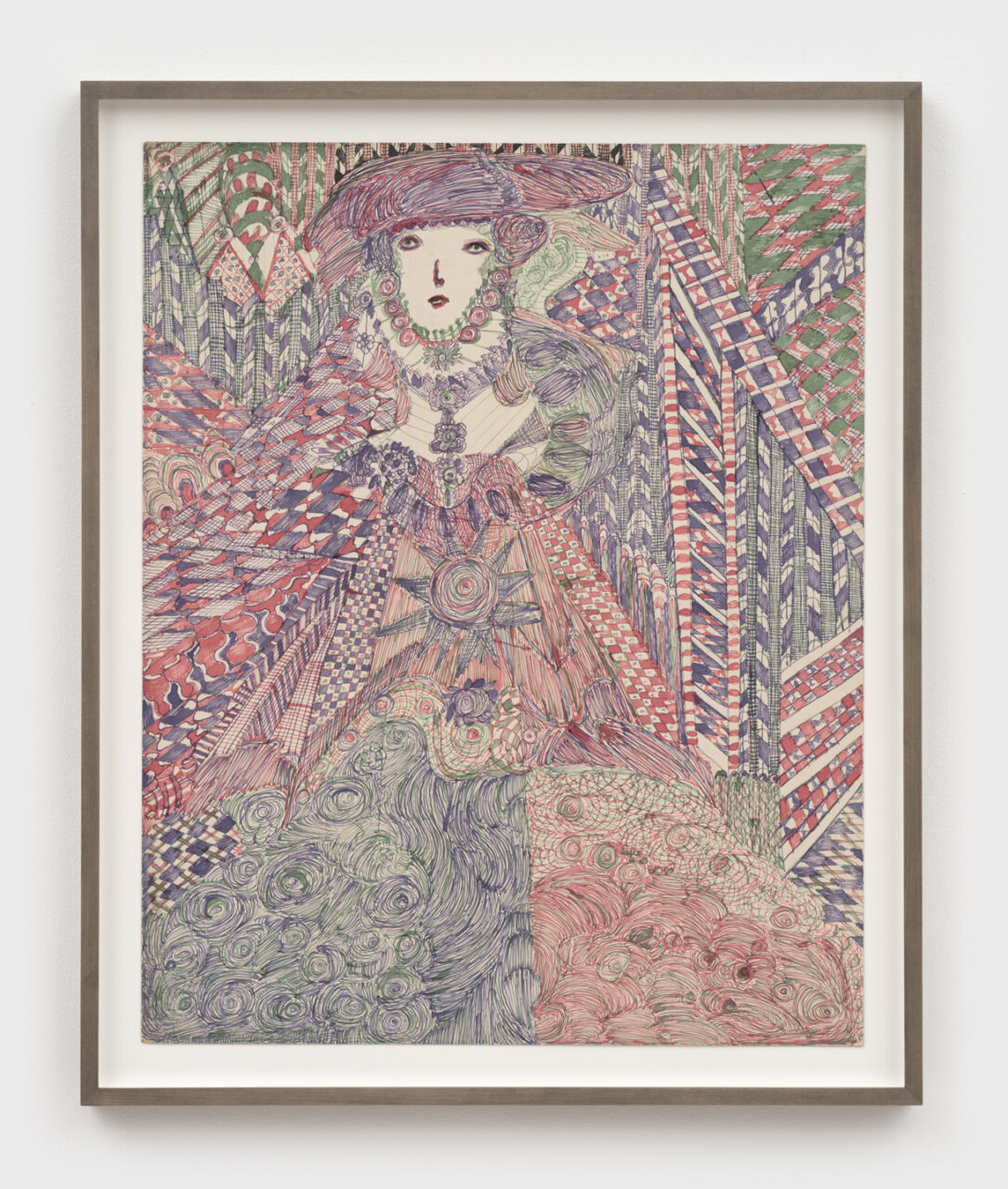
Madge Gill
Untitled, 1954
Ink on paper
26 x 21 inches
Framed: 28 x 23 inches -
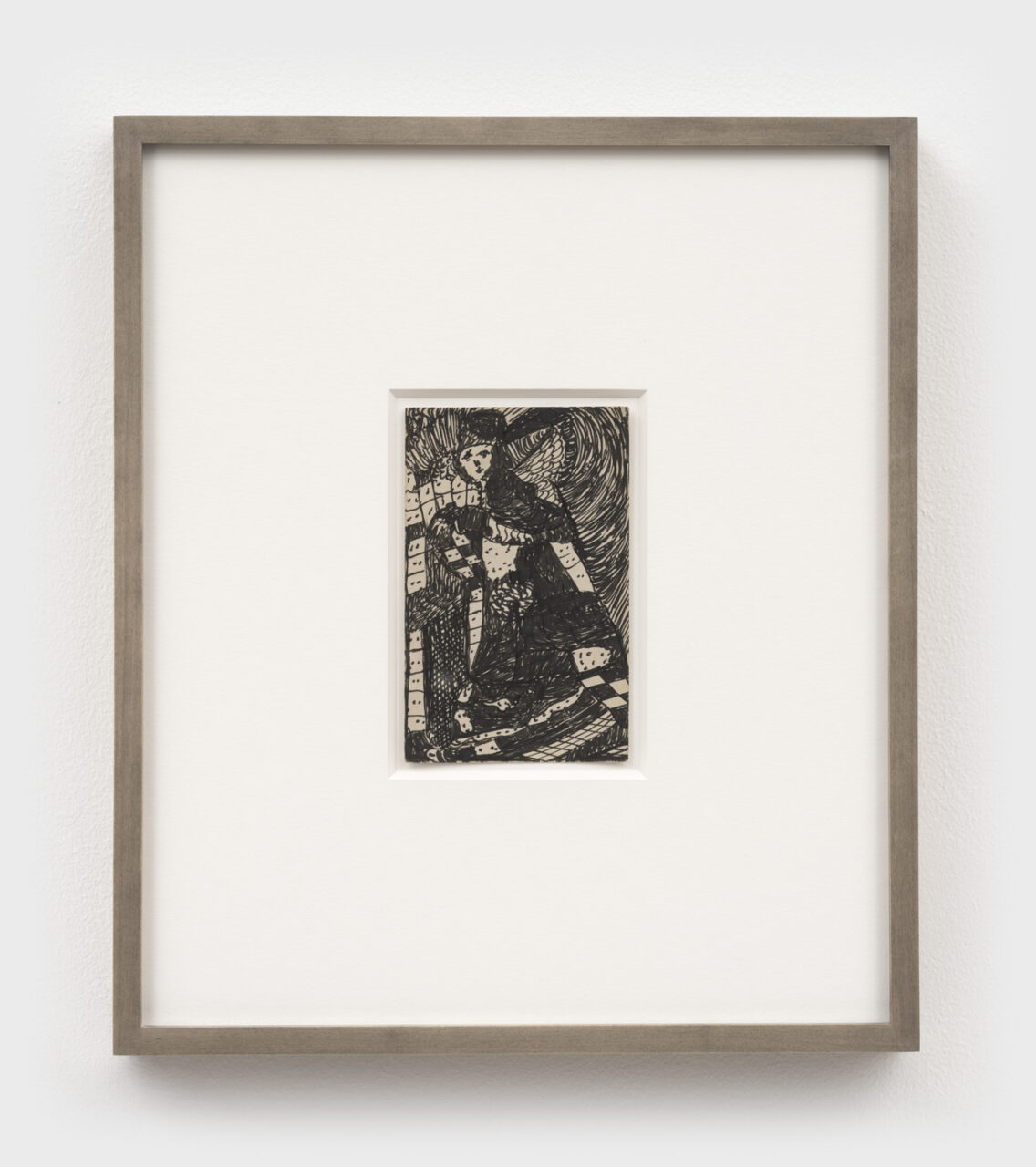
Madge Gill
Untitled, c. 1940/50
Ink on postcard
5 1/2 x 3 1/2 inches
Framed: 14 1/2 x 12 1/2 inches -
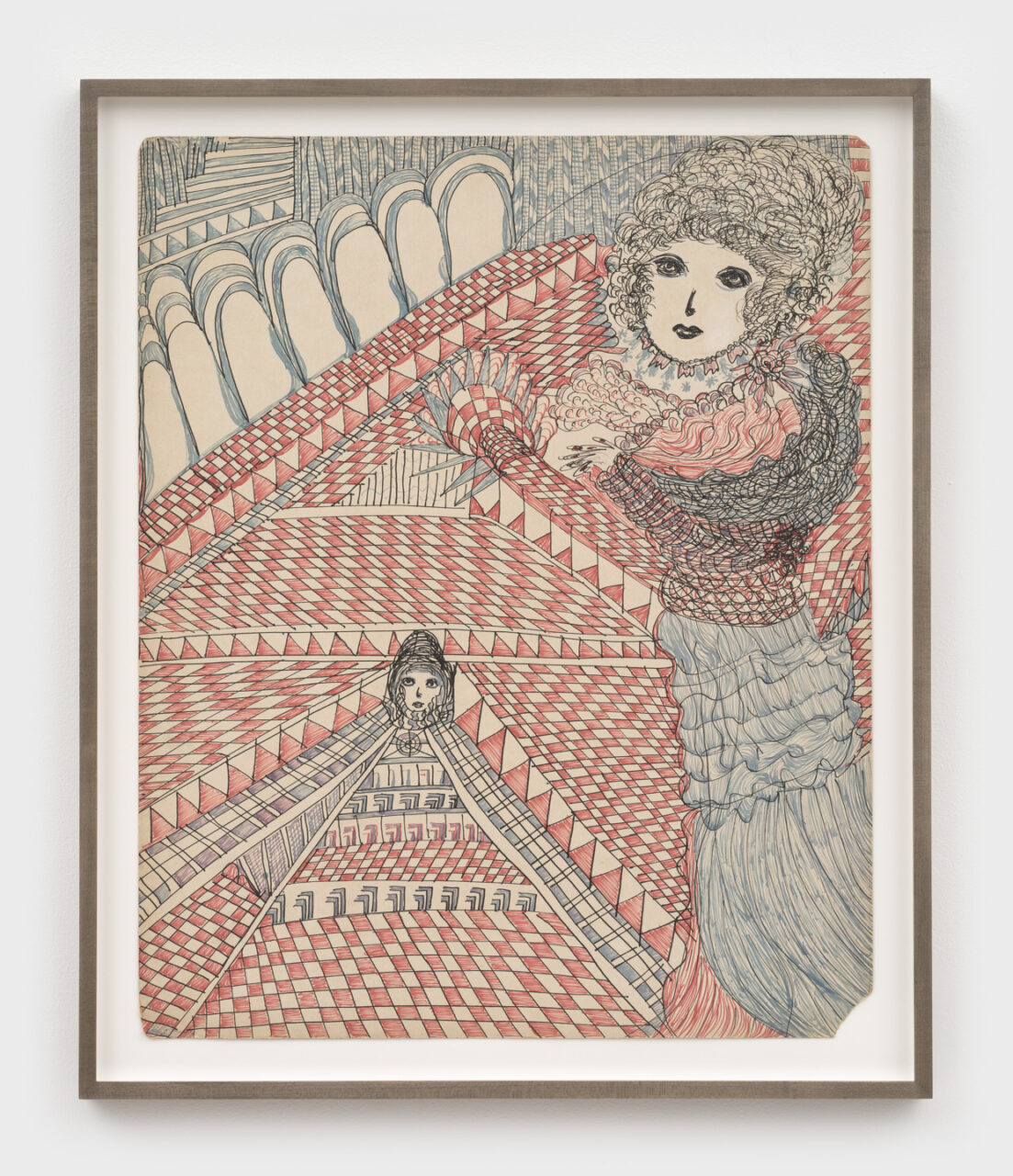
Madge Gill
Untitled, 1954
Ink on paper
26 x 21 inches
Framed: 28 1/2 x 23 1/2 inches -
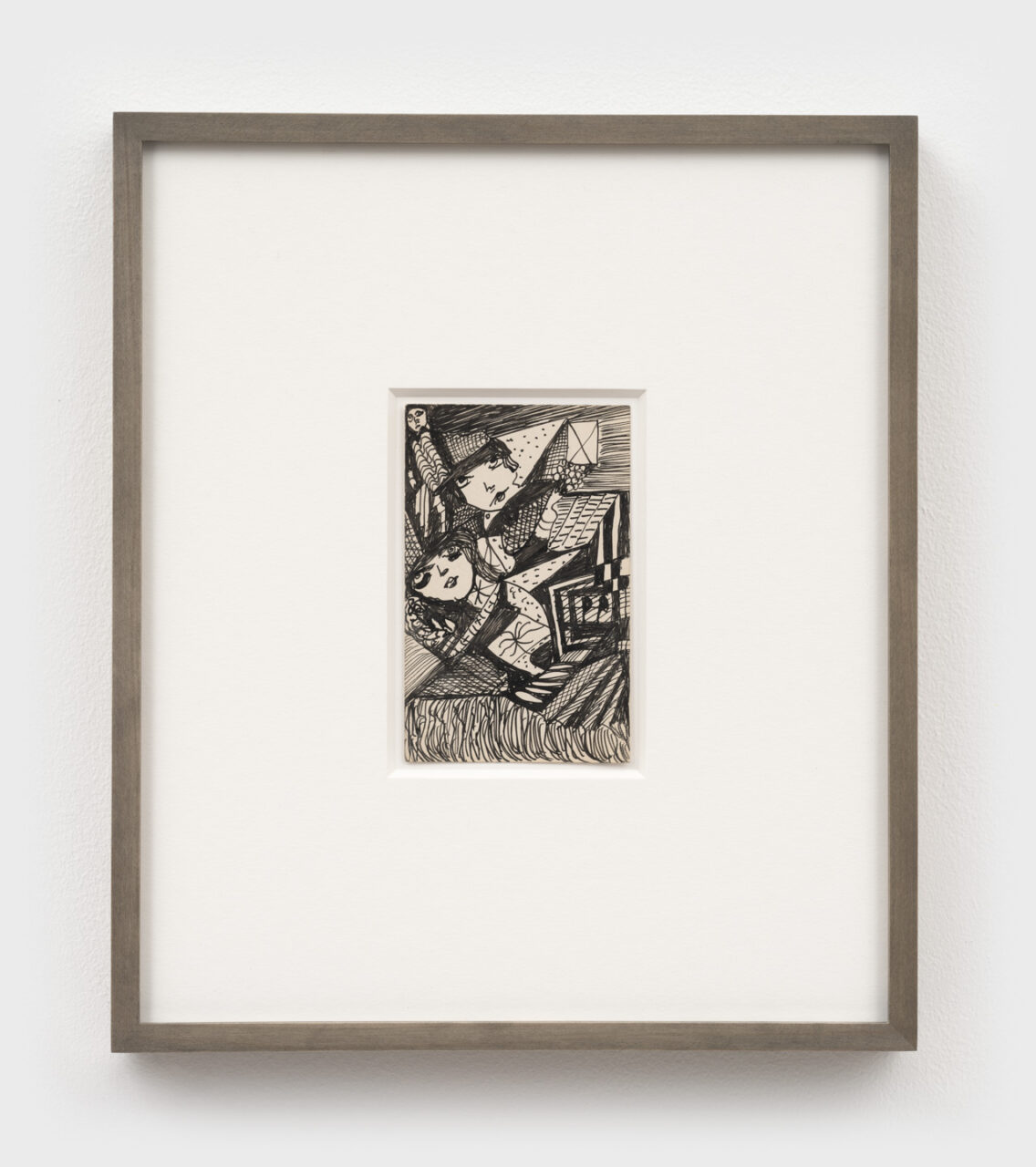
Madge Gill
Untitled, c. 1940/50
Ink on postcard
5 1/2 x 3 1/2 inches Framed: 14 1/2 x 12 1/2 inches -
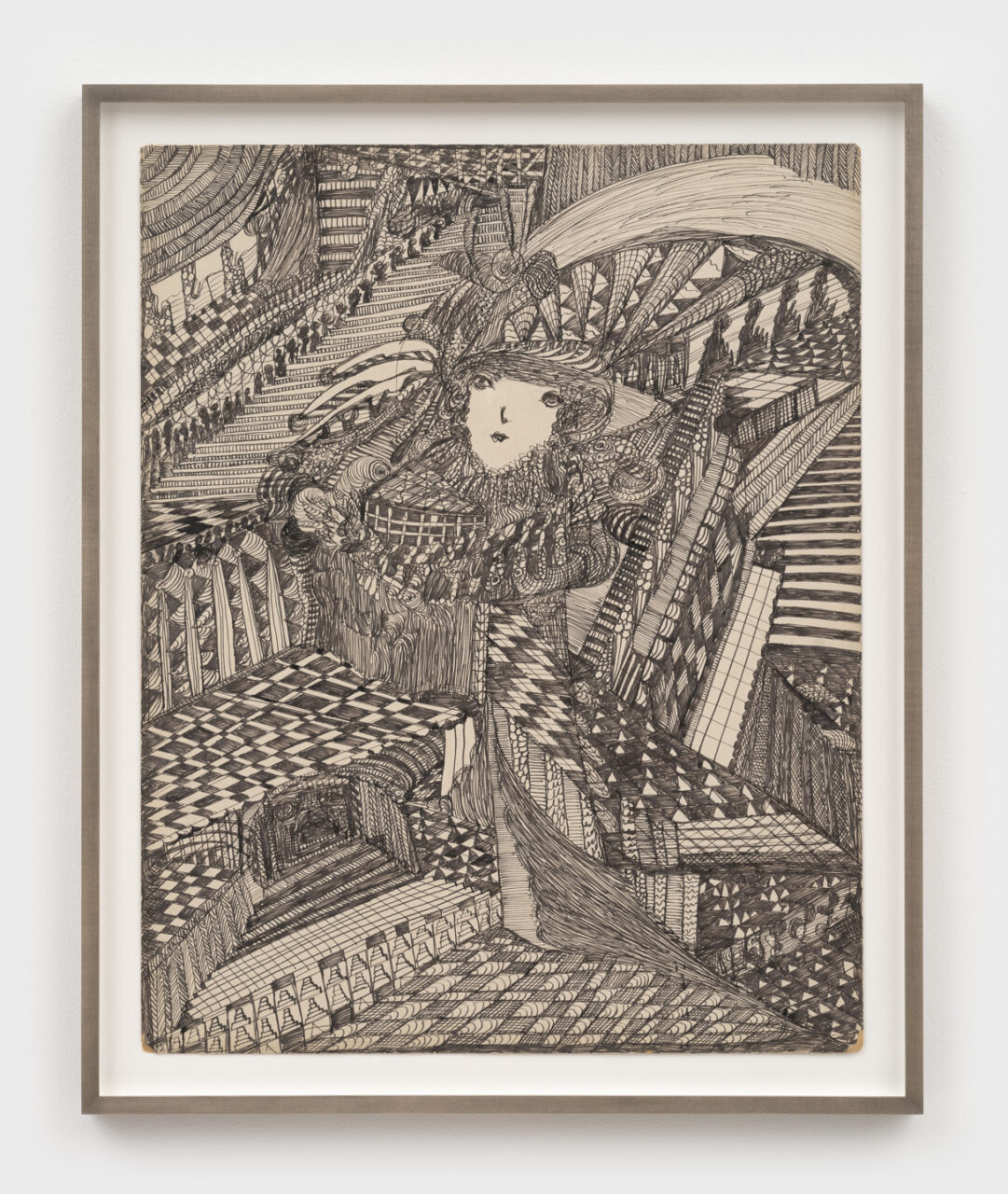
Madge Gill
Untitled, 1951
Ink on paper
25 1/4 x 20 in
Framed: 28 x 23 inches -
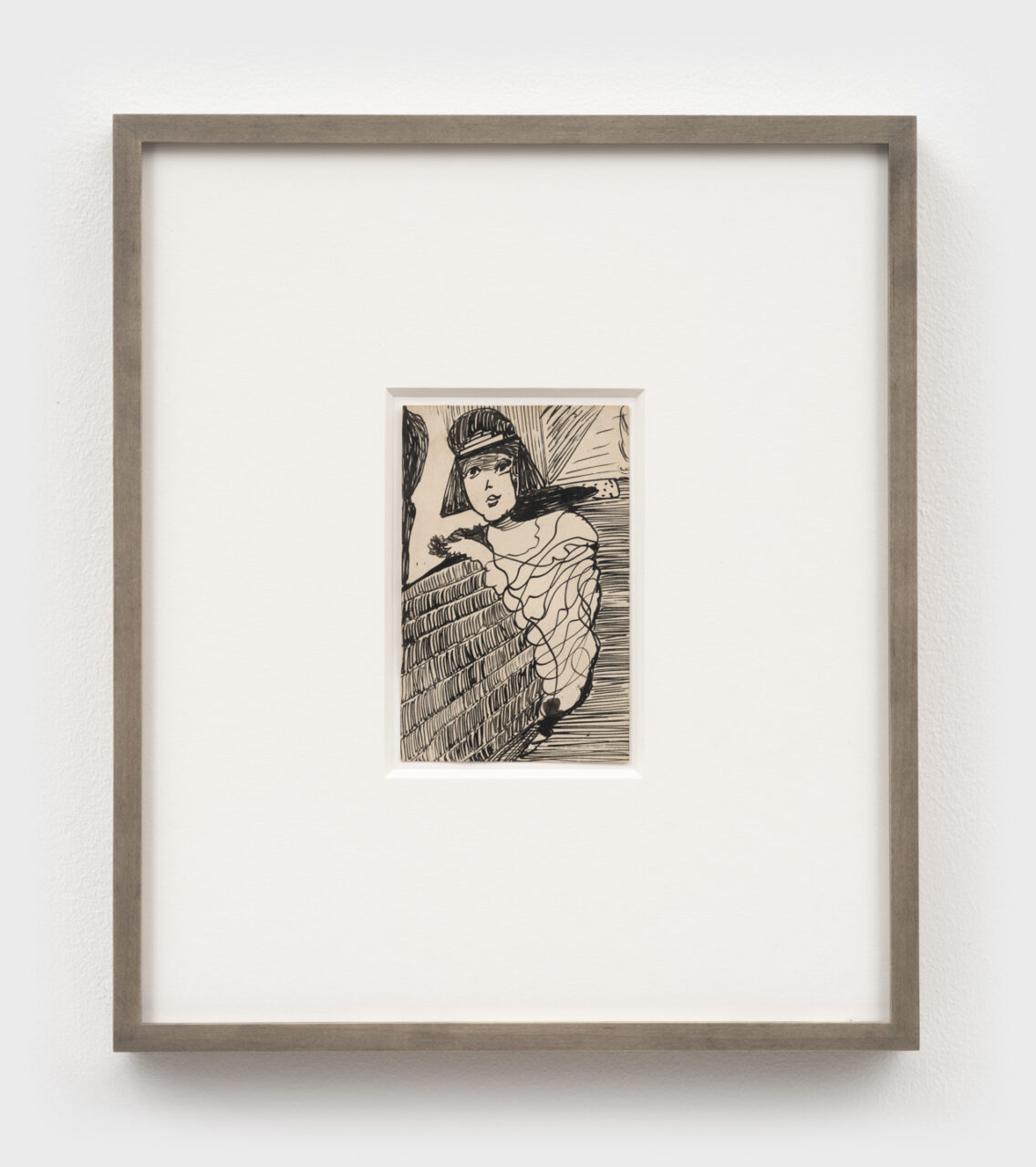
Madge Gill
Untitled, c. 1940/50
Ink on postcard
5 1/2 x 3 1/2 inches
Framed: 14 1/2 x 12 1/2 inches -
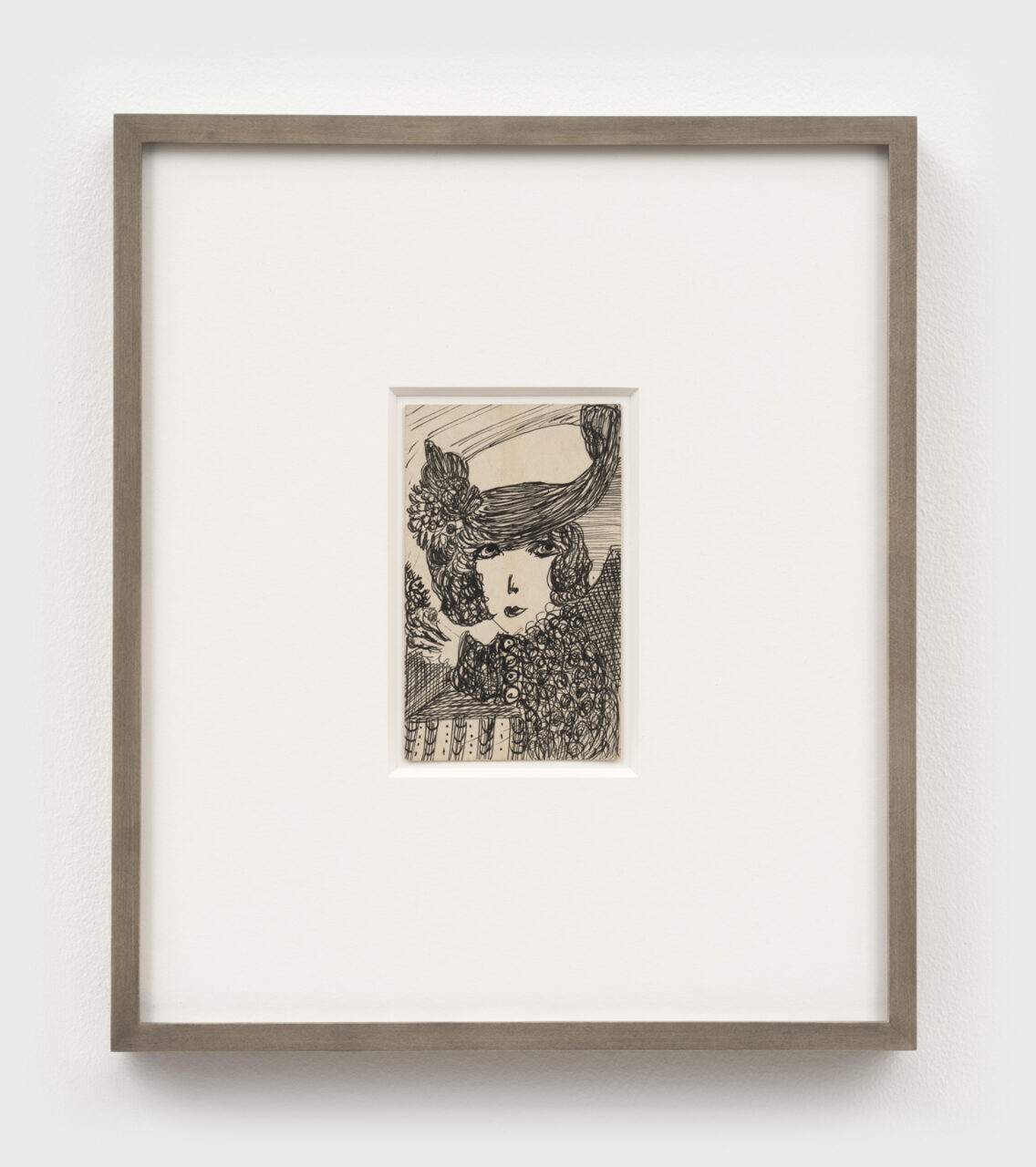
Madge Gill
Untitled, c. 1940/50
Ink on postcard
5 1/2 x 3 1/2 inches
Framed: 14 1/2 x 12 1/2 inches -
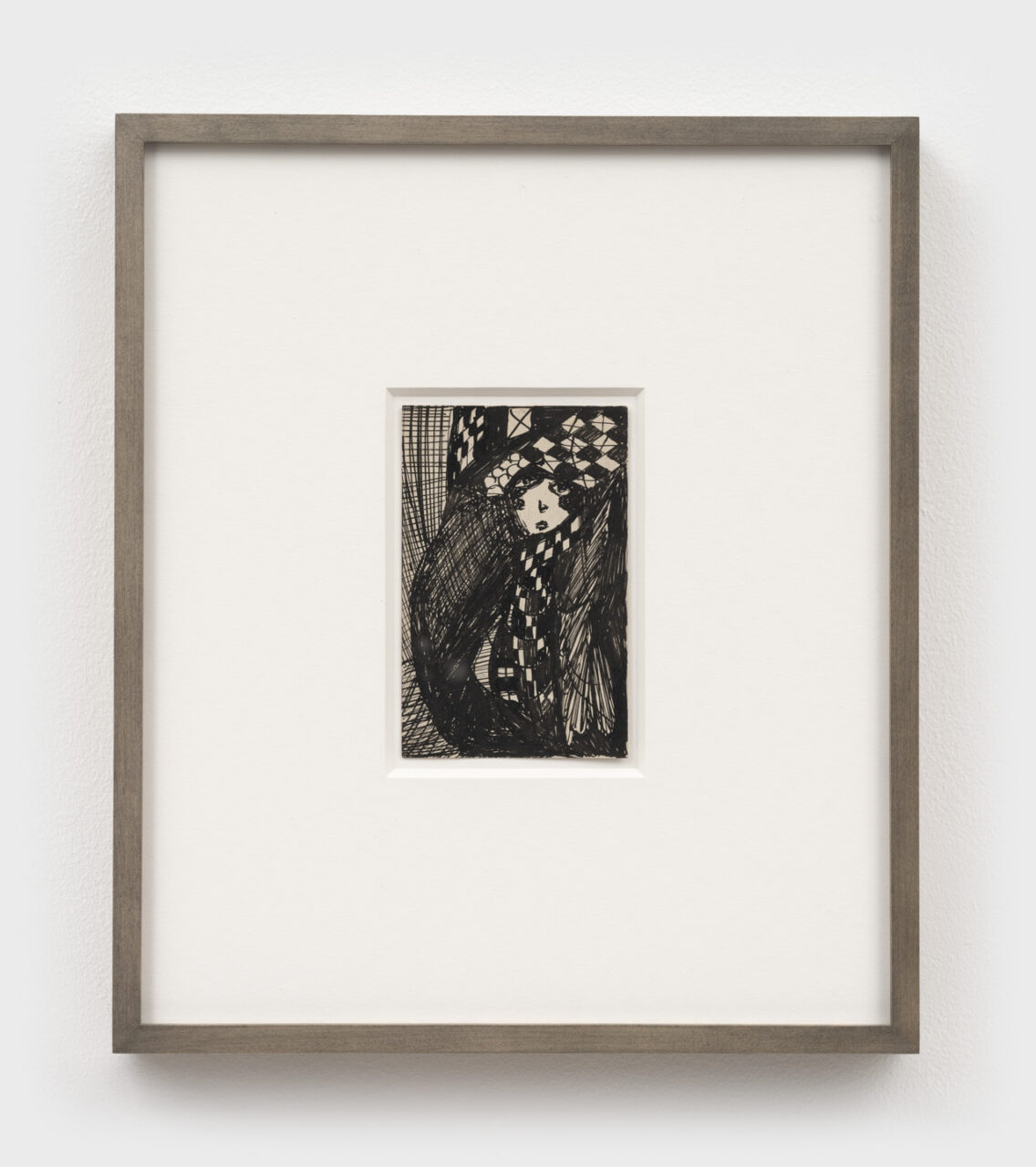
Madge Gill
Untitled, c. 1940/50
Ink on postcard
5 1/2 x 3 1/2 inches
Framed: 14 1/2 x 12 1/2 inches -
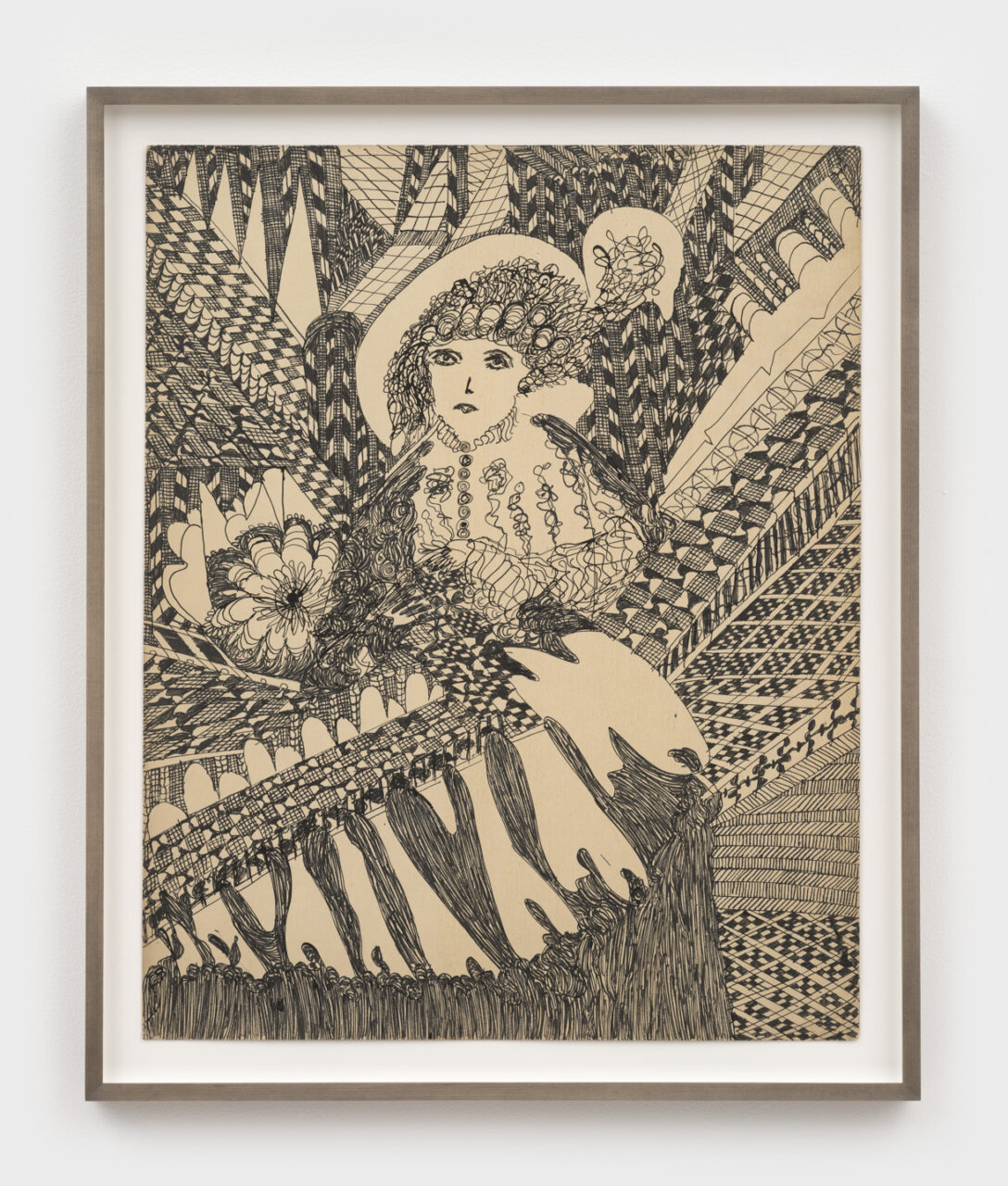
Madge Gill
Untitled, 1953
Ink on paper
25 x 20 inches
Framed: 28 1/2 x 23 1/2 inches -
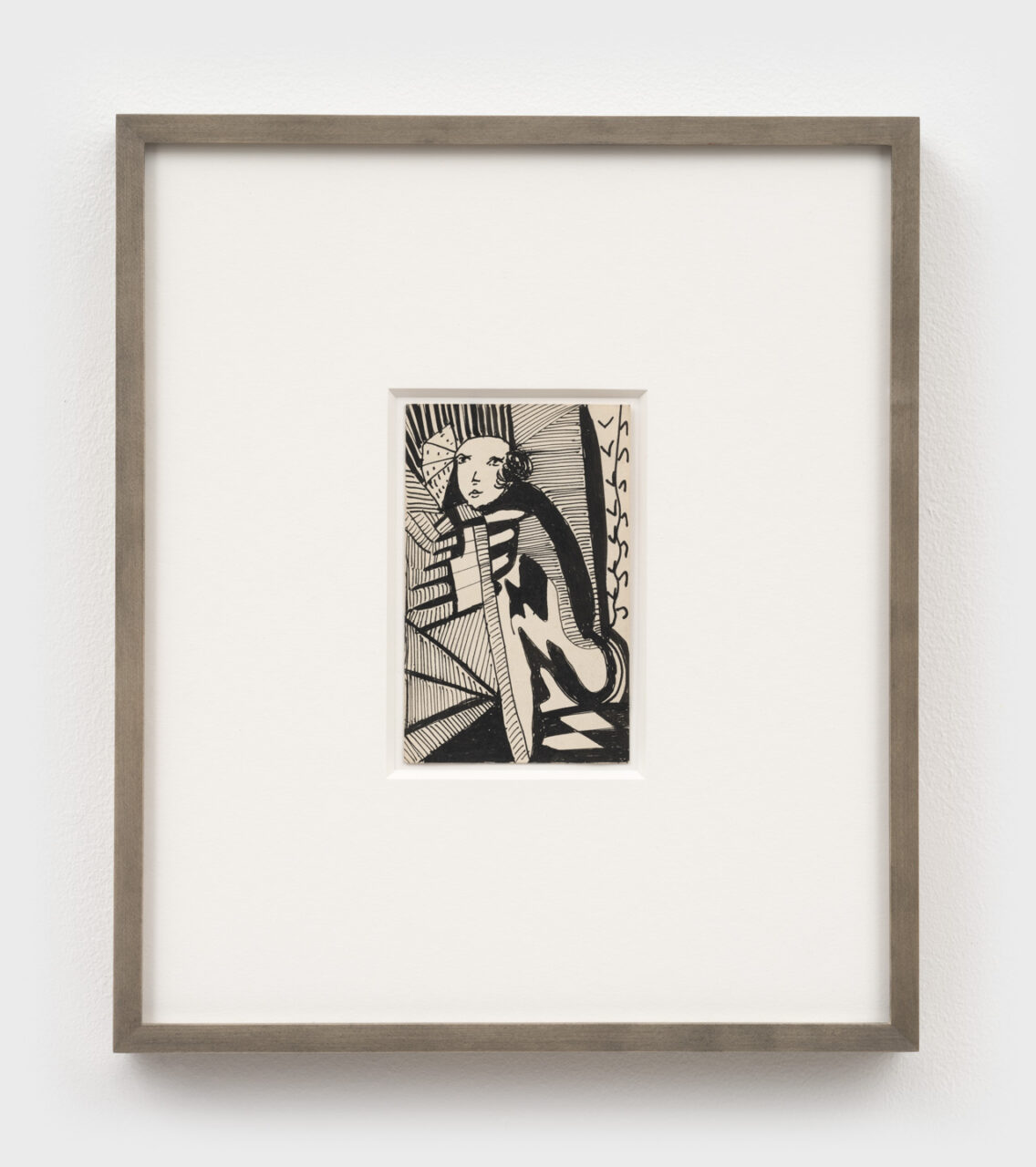
Madge Gill
Untitled, c. 1940/50
Ink on postcard
5 1/2 x 3 1/2 inches
Framed: 14 1/2 x 12 1/2 inches
Press Release
Nicelle Beauchene Gallery is pleased to present Channeling, a three-artist exhibition comprising historic works on paper by Madge Gill alongside contemporary paintings and sculpture by Chelsea Culprit and Jennie Jieun Lee.
Channeling establishes a conversation among three visionary artists whose practices offer distinct lessons in intuitive world building. Looking to personal, domestic, and material histories as guiding frameworks for making, these artists construct kaleidoscopic compositions rife with individual mythologies and symbols. Gill, Culprit, and Lee understand the body as a vessel for these histories, using art making as a channel for unearthing the past while envisioning alternate realities. In particular, each artist employs a specific language of drawing, printmaking, and collage. Channeling, is, in an expanded sense, an effort to understand the artist as a medium: a spiritual conduit and a forecast for change.
Grounding the exhibition are a suite of ink on paper drawings by Madge Gill (1882–1961) produced during the late 1940s and early 1950s. Gill, who has come to be regarded as one of Britain’s foremost self-taught artists, spent most of her life living and working in the East End of London. She began prodigiously making artwork in 1920 after a series of traumatic health issues; in March of that year, Gill experienced her first ‘inspiration’ — a visitation by a divine entity who became her spirit-guide, known as Myrninerest. Upon this inspiration she immediately began making automatic writings and drawings with India ink, frequently on small postcard size paper, though too on larger scale sheets and rolls of untreated calico. Gill would discuss these works as having been propelled by Myrninerest, and attributed authorship to this psychic figure. Detailed yet quick, Gill’s drawings most often depict the faces of anonymous women, brimmed by hats and coats that melt into densely articulated spaces of architectural fantasy. The mysterious subjects seem equally to be crowded, frenetic portraits of metropolitan life and divine descriptions of a new dimension, heralded by a feminine spirit.
At a much larger scale, Chelsea Culprit toes a similar hallucination with highly saturated, latex house paints and fractal patternation. Culprit’s new paintings operate within, as the artist describes, a ‘drop cloth vernacular’: a process by which the artist moves between the floor and the wall, as layers of stamped lace accrue atop quilt-like fields of bright color. Enacting gestures conjured through the figurative paintings, Culprit’s new abstractions embody the liberation and movement central to her practice. Referencing histories of gendered labor, craft, and folklore, Culprit’s paintings stitch together myriad elements akin to the formation of an exquisite corpse or the process of collage; for Culprit, bodies are always in states of mythic transfiguration. At the center of the gallery, an antique, great spinning wheel merges with a human-size figure in a state of contortion. Culprit’s sculpture upturns the encumbered, colonial imaginary of domestic labor as women’s work; here the figure subverts, and almost becomes one with, the machine—a suggestion of liberated automation, a labored body in a state of transformation.
Transfiguration and collage furthermore preoccupy the sculptural paintings and porcelain busts of Jennie Jieun Lee. Joining the disparate gestures of wood burning, wheel thrown stoneware, slip-cast porcelain, air brushing and oil painting, Lee constructs wall-based, abstract compositions in relief that simultaneously expand and contract with information. Responding intuitively to color and form, Lee’s mixed-media paintings reference the domestic to the digital, each an amalgam of life embedded with the minutiae of the artist’s hand. Akin to Gill’s faces, small-scale, slip-cast porcelain busts carry Lee’s hand in the round: anonymous heads sopped with glaze and molded with apparent disfigurement. The disrupted visages embody an unknowable presence, guardians of chance and perpetual mutability.
Chelsea Culprit (b. 1984, Paducah, Kentucky) lives and works in Upstate New York and Mexico City, Mexico. Recent solo exhibitions include PSYCHOPOMP, Mariposa Drive, Paris, FR (2024); Amygdala in Repose, Morán Morán, Los Angeles, CA (2022); Pole on Break, Queer Thoughts, New York, NY (2022); Malas Madres, Lulu, Mexico City, Mexico (2019); Fear of Seduction, Queer Thoughts at Maureen Paley, London, UK (2019); DMing Purgatory, Queer Thoughts, New York, NY (2018); Fishnets, Uma Certa Falta de Coerencia, Porto, Portugal (2017); Right to Remain Elegant, Galeria La Esperanza at Barba Azul, Mexico City, Mexico (2017); and Miss Universe, Yautepec, Mexico City, Mexico (2016). Culprit’s work featured in recent group exhibitions at Museo Tamayo, Mexico City, (2021), TANK Shanghai, Shanghai, China (2020); Museo Arte de Zapopan, Guadalajara, Mexico (2020); Palais de Tokyo, Paris, France (2019); Museum of Modern Art Warsaw, Warsaw, Poland (2019); Revolver Gallery, Lima, Peru (2019); Australian Centre for Contemporary Art, Melbourne, Australia (2018); and Museo de Arte Carillo Gil, Mexico City, Mexico (2018).
Jennie Jieun Lee (b. 1973, Seoul, South Korea) lives and works in Sullivan County, New York, and earned her MFA from California State University Long Beach and a studio diploma from the School of the Museum of Fine Arts, Boston. Recent exhibitions include Strawberry Nose, Cooper Cole, Toronto (2024); I Spy, Alexander Gray Associates, Germantown (2023); Marie, Martos Gallery, New York (2022); Halsey McKay Gallery, East Hampton (2020); The Pit, Glendale (2017); and Marlborough Chelsea Viewing Room, New York (2016). She is the recipient of several grants including Tisch Faculty Fellowship (2022), Art Matters Foundation Grant (2019), The John Simon Guggenheim Memorial Foundation Fellowship (2017), and the Pollock Krasner Foundation Grant (2016). She has collaborated with fashion designer Alexander McQueen; and her work can be found in the permanent collection of the Pennsylvania Academy of Fine Art. Lee currently teaches ceramics at School of the Museum of Fine Arts at Tufts University.
Madge Gill (b. 1882, Walthamstow, England; d. 1961, Leytonstone, England) spent most of her life living and working in the East End of London. She began publicly exhibiting her work in the early 1930s as part of the annual East End Academy exhibitions at Whitechapel Art Gallery, and in 1942, showed in Clementine Churchill’s benefit exhibition Artists Aid Russia at the Wallace Collection, Hertford House. Gill’s first solo exhibition, Madge Gill—The Guided Hand, was organized posthumously by Charles Spencer at Grosvenor Gallery, London (1968). Her work has since been included in numerous solo and group exhibitions internationally. Her largest known work is currently on display in Foreigners Everywhere at the 60th Venice Biennale (2024), curated by Adriano Pedrosa. Public collections include Collection de l’Art Brut, Lausanne, CH; Le LaM, Lille, FR; Metropolitan Museum of Art, NY’ Milwaukee Art Museum, WI; Museum Dr. Guislain, Gent, BE’ Musgrave Kinley Collection, Whitworth Gallery, Manchester, UK; Newham Archives and Local Studies Library, London, UK; Centre Pompidou, Paris, FR; and Treger Saint Silvestre Collection, São João da Madeira, PT, among others.